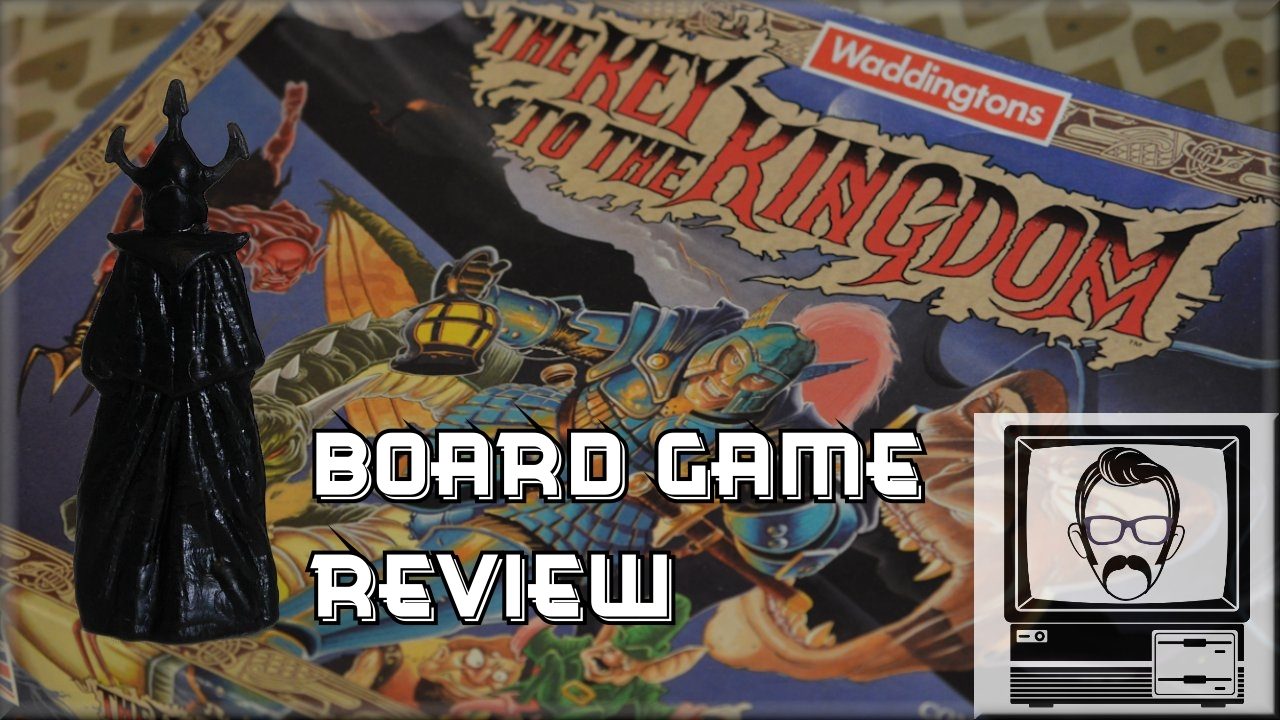This is Berzerk… It’s a video game developed and produced by Stern Electronics in 1980, and it’s actually a pretty good game. But terrifyingly, it’s also claimed to be responsible for the deaths of three people in the 1980s, drawing spine chilling parallels to the urban legend that is Polybius. So the question is, are there any truth to these stories?…. and if so, was Berzerk, actually the real Polybius?

As a University of Chicago Lab Student in the early 70s, Alan McNeil started to detest these new computers appearing around him.
“I thought the computer was the worst piece of machinery I ever dealt with. I kept writing a program over and over again that was supposed to average 25 test scores, and the computer kept rejecting it. It took hours, days, to get it to do something that I could have done in a few minutes, even without a calculator” ~ Alan McNeil

This was the mind of the genius who within the next decade would write Berzerk for Stern Electronics.
This turn around was down to PLATO, the university’s giant instruction computer. A computer that was capable of running a variety of games, albeit crude ones. These games hooked McNeil, and after college he went from a computer store manager job, to working at Bally Manufacturing, and then in 1979, Stern Electronics.
What McNeil found easiest in this world of computers, was developing creative concepts. He’d already worked on programming games like Boot Hill and Sea Wolf II, but his creative efforts had been turned down at Bally. Stern though were more than happy for him to work on all aspects of what would become Berserk. The first prototype was created on a Tektronix development system and influenced by the game Chase. But the concepts and title were borrowed from Fred Saberhagen’s series Berserker; a set of novels depicting robot war machines that are out to kill all biological life forms.

The Berserkers are massive, intelligent war machines created by a now extinct alien race. These machines have only one directive: exterminate all biological life, which they consider a threat. After wiping out their creators, the Berserkers spread across the galaxy, continuing their genocidal mission.
A good start then.
The Game: Berzerk
McNeil wanted the average Berzerk game to last three minutes. Three frantic minutes, just like your mom got. In early builds the robots moved too quickly, making the game far too difficult, even with just six robots. At this stage, the average game time was six seconds. He adjusted their speed, lowered the number of bullets, and implemented a random seed generator based around the characters x and y co-ordinates, to make the experience feel immersive. Pinball like sounds were also swapped out for speech synthesized warnings, threats and insults from the robots
Along with the robots, the character “Evil Otto” was also created, a manically bouncing, happy face, designed to stop you lingering in each room. A design McNeil admitted as being associated with the phrase “Have a nice day”, used by “people who didn’t want you to have a nice day, but instead wanted to cover themselves in fake righteousness. So I showed it like it was: ‘have a nice day while I beat you to death!'”
All these elements them, seem terrifying.

Various outlets would actually take McNeil’s words and snippets of information and spin the game as being evil, and violent.
You know the type. They didn’t want the game anywhere near their kids. Influencing their pure minds.
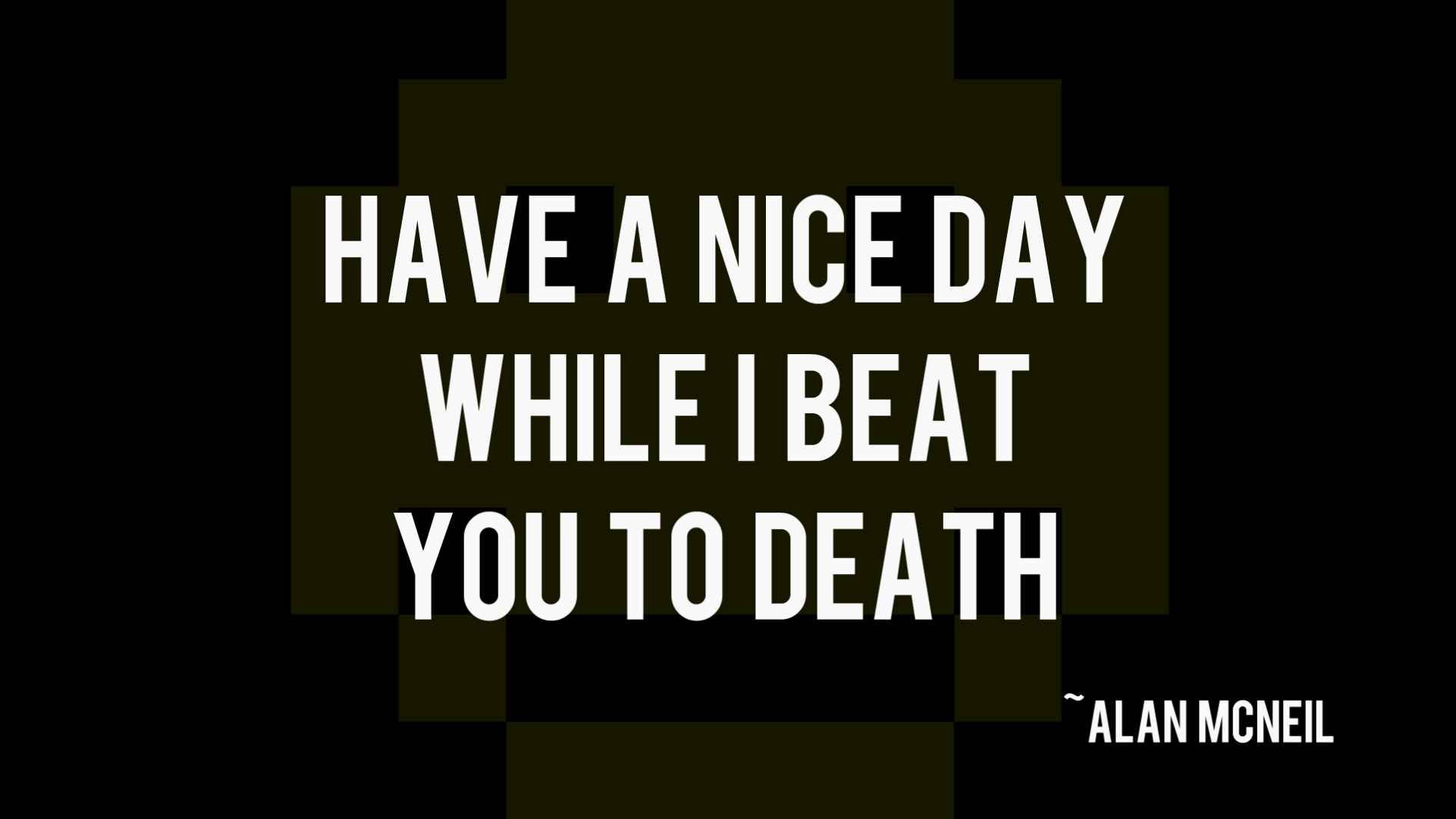
But in fact, early testing of the game did prove some of this violence. Early test models had large joysticks, which had to be replaced by a standard one-inch-high Wico model. Gamers would pull down so hard on the sticks that they would actually tip the cabinet on themselves.
Thankfully, death by this means was fixed before the cabinets left the warehouse.

In November 1980, the machines first started rolling out. Local arcades in the Chicago area got the first machines, but due to huge success, they quickly spread across North America.
However, it didn’t seem to take long before those visions of horror became true….
The Stories of Death
There are various stories which have made their way through forums throughout the years. Each with varying detail.
Jeff Dailey
The first death recorded was that of Jeff Dailey. A 19 year old from Suffolk City, Virginia.
Dailey was a fan of video games, a big fan, and on the 12th January 1981 had ventured down to his local arcade specifically to play Berzerk. Something he did on a regular basis.

On this occasion, he was reported to play the game for hours, racking up several high scores. His highest being 16,660.
It was during his final playthough however that fate struck. He suffered a massive heart attack and died at the scene, with medical workers unable to revive him.
Details are sketchy, but this story was reportedly first mentioned in an independent gaming magazine called Video Ace in 1982, and in various other publications there-after. Particular attention was paid to the fact that his high scores contains the numbers 6-6-6. THE SIGN OF THE DEVILE.

Local news sources also backup the fact that a Jeff Dailey did in fact die in that area, during that year.
Peter Bukowski
With the second death, we’re afforded many more details. It occurred in Calumet City, Illinois. Specifically at 674 River Oaks Drive; This was the location of the renowned Friar Tuck’s Game Room; a medieval themed arcade that had opened in February 1982. This new project was the brainchild of Tom Blankley; a realty professional who started the business to get into the River Oaks Shopping Plaza. However, he quickly realised that the arcade business required a lot more attention than he expected, and turned his full attention to it.
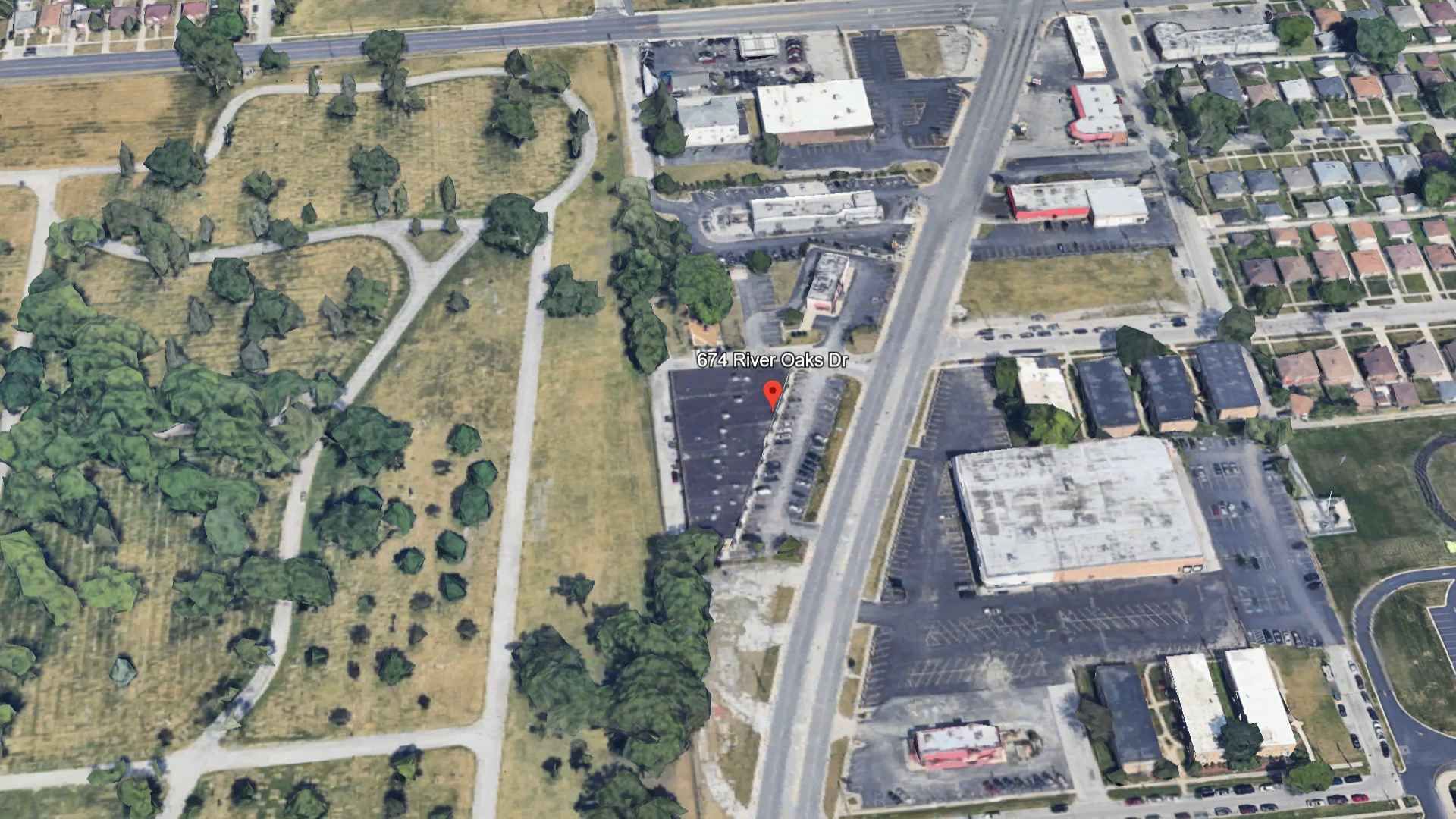
Friar Tuck’s quickly became the hang out for a lot of kids in south Chicago, especially on weekends when it was pretty much packed out. One regular was 18 year old Peter Bukowski, who started frequenting the arcade almost immediately.
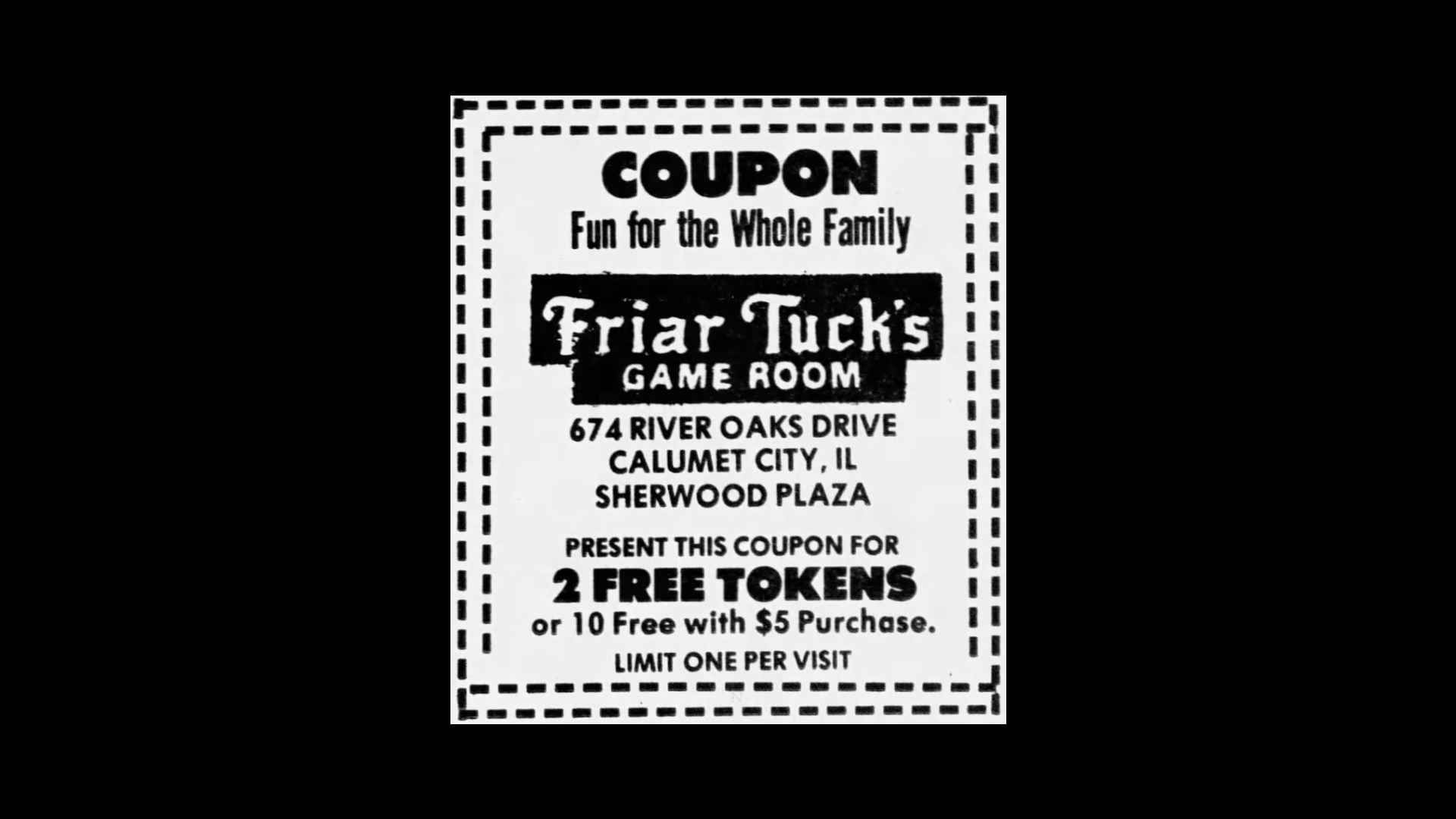
One of the games that he was drawn to was Berzerk. Although a dark machine, with images reminiscent of Battlestar Galactica’s Cylons on the side, it was brightly lit, and had a compelling attract sequence. With Stern Electronics also local to the Chicago area, it had been installed in the arcade from the go. Peter then, would regularly visit, pop in a Friar Tuck’s token and try to beat his previous high scores.

He’d only been visiting the arcade a couple of months, when on a cold and unusually snowy Saturday evening on the 3rd April 1982 Peter took a four mile walk visiting his girlfriend and a couple of friends, before they swung by Friar Tucks. Once inside, he grabbed a pot of coins, and began to play Berzerk.
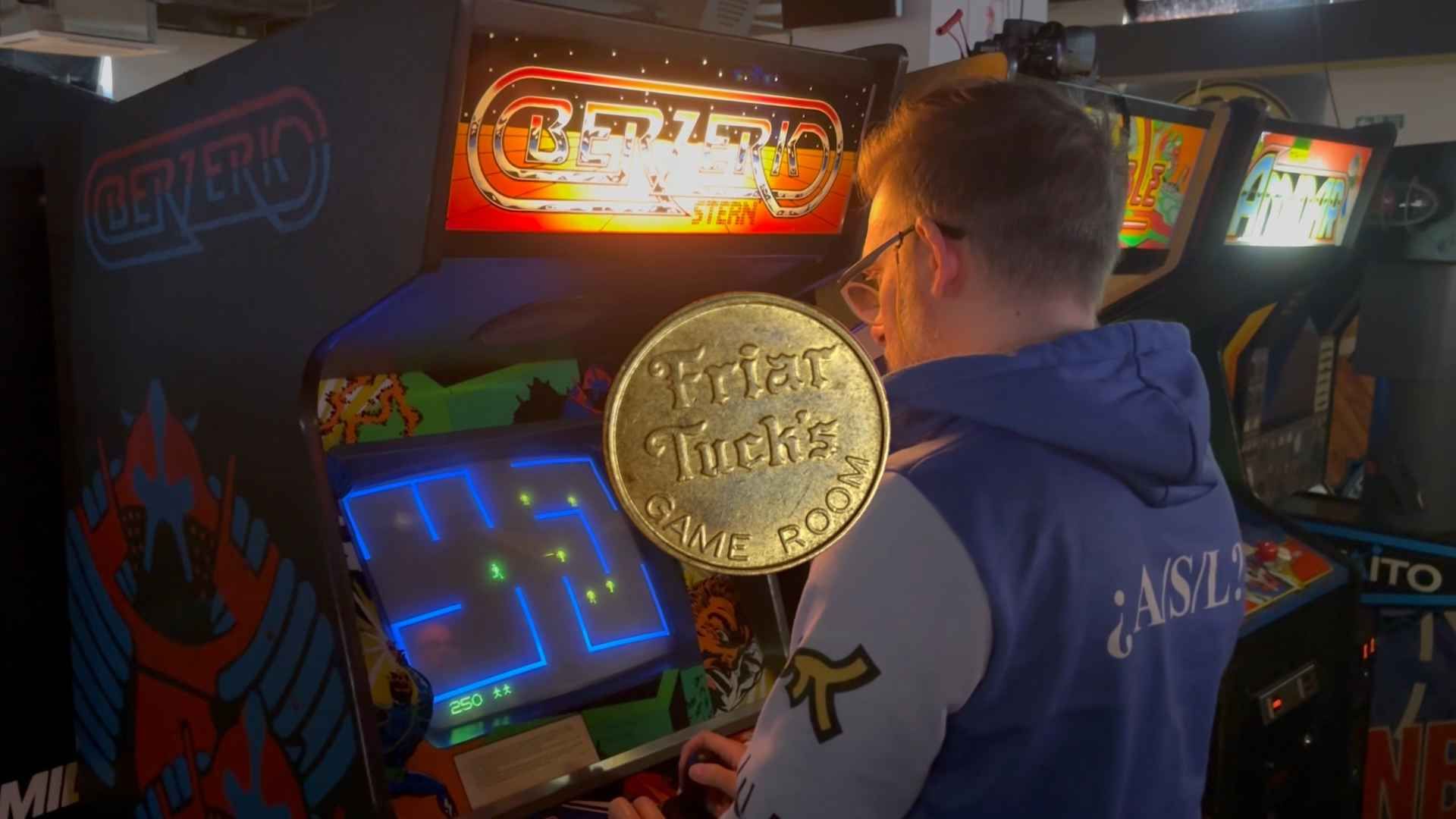
According to the owner of Friar Tuck’s, Peter had already racked up two high scores when he turned around felt a sharp pain and collapsed to the floor. His friends instantly alerted staff and a ambulance was called that took him directly to Indiana Hospital.
Sadly Peter would die before he ever received any treatment, leading to a profound loss among his friends and family.
The next day newspapers were loaded with headlines such as “Video Game Death”

It was up to Deputy Lake Country Coroner Mark Allen to investigate who passed his comments onto the local media;
“The possibility that Peter Bukowski died earlier this month as a direct result of stress caused by the game was investigated, ‘but we don’t want to say yes or no whether the video game represents enough exertion to have brought on the attack’.
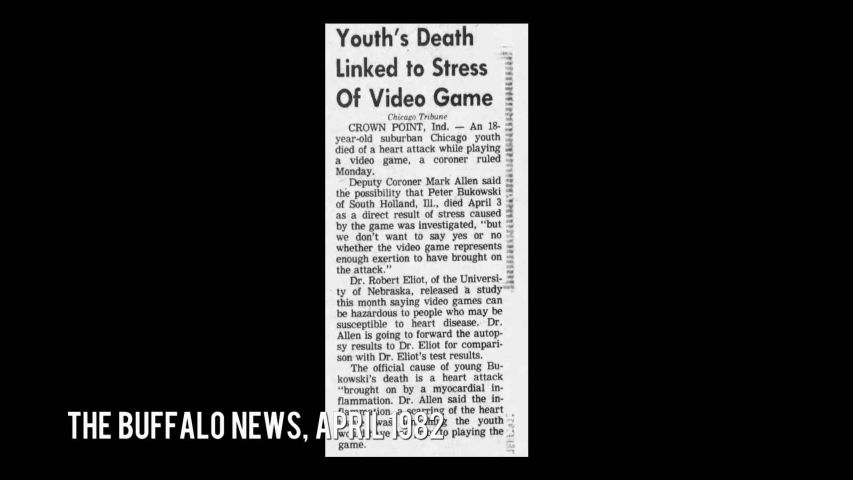
It seemed that within the space of just two years, Berzerk had potentially been associated with the deaths of two teenagers.
Shortly after the incident, camera crews descended upon Friar Tucks to interview players, with the owner commenting “I don’t like this kind of publicity… I expected it to hurt business, but if anything, business has been up”

Edward Clark Jr.
Thankfully for the next 6 years there were no further reports, that is until Sunday 20th March 1988, when Edward Clark Junior, another teenager, aged 17 would also walk into Friar Tuck’s Game Room, play Berzerk, and shortly after, also meet his demise.

Now the reports of this incident seem to differ, they’ve been clouded by time, but the story goes like this;
It was a warm Monday night, unusually so, and Clark found himself at the River Oaks Plaza. He often did this with groups of friends, and would also sometimes find himself in trouble with the local authorities, but nothing major. He’d recently been selected to enlist in the Army Reserve’s Green Beret, with support from his mother who had hoped her son would find something to put his energy into in life.
Upon entering Friar Tuck’s Edward played a few games, one of which was reportedly Battlezone, before heading over to Berzerk. On this occasion, it seems that someone had left a few coins on the machine, and so Clark popped one in the game and started playing.
As he was doing this, 16 year old Pedro Roberts approached him, clearly wound up, and claimed that the coins were his.
Tom Blankely, the owner, would later report “I’m not sure what happened between them prior, if there had been some bad blood for a while or what”….”I remember someone saying Clark had stolen Robert’s girl friend or something.”
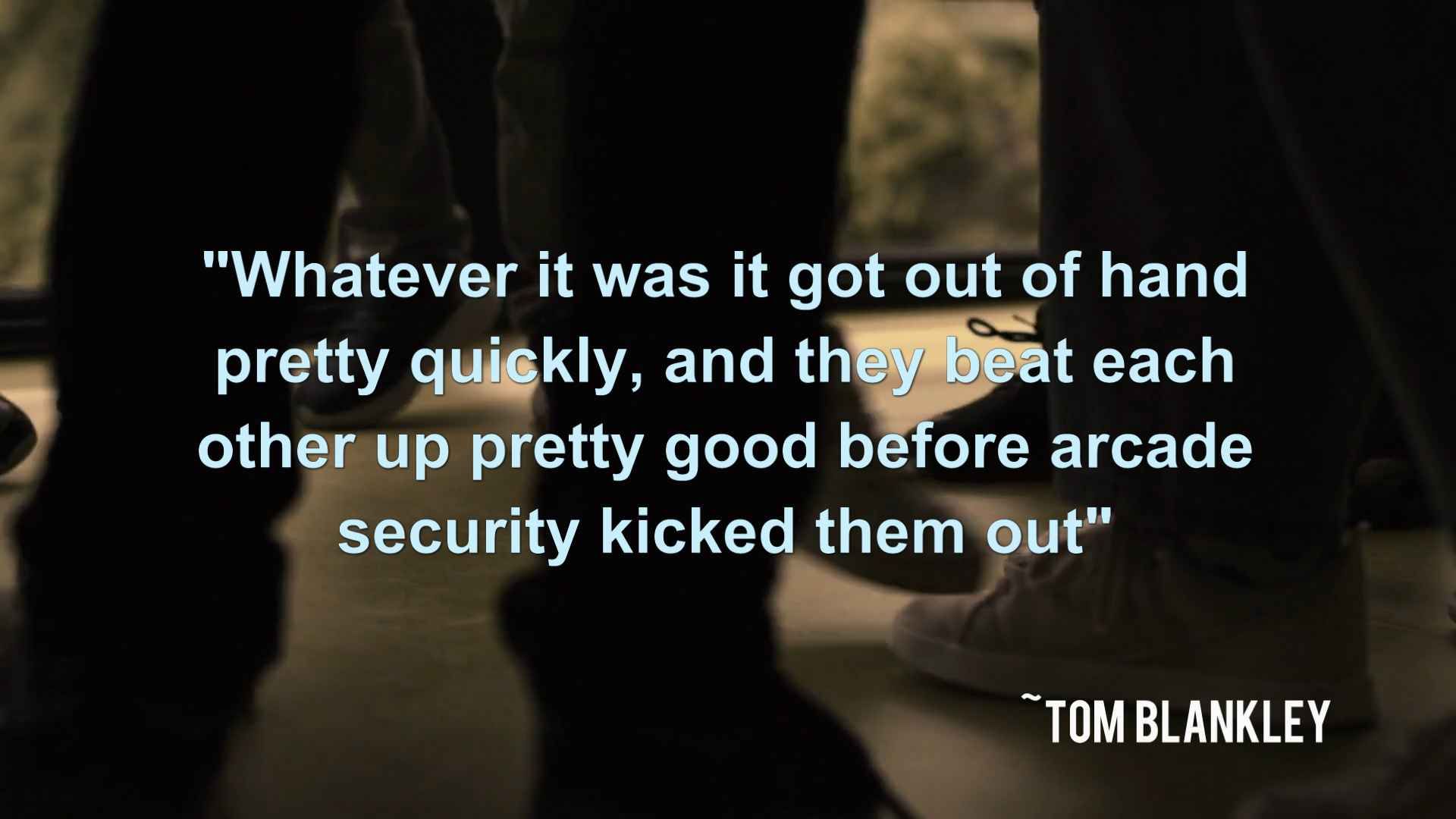
Whatever the underlying problem was, Roberts first attacked the group before reportedly pulling a knife and threatening Clark and his friends.
Tom Blankely went on “Whatever it was it got out of hand pretty quickly, and they beat each other up pretty good before arcade security kicked them out”
Here’s where it gets even more murky. We don’t know how much violence was escalated inside the arcade. But arcade staff kicked Roberts out. Roberts left, turned right and headed up past the open air car park next to the arcade. After ten minutes, staff asked Clark and his friends to leave, but told them to walk in the opposite direction.

But this didn’t happen. The group proceeded to walk in the same direction, past the car park and a small alleyway nearby where Roberts had been waiting. He ran out and immediately stabbed Clark in the chest with a knife.
At first, Clark thought he was ok, and refused for an ambulance to be called, but he quickly collapsed and was bundled into the back of a friend’s car, and driven at high speed to a Munster clinic, where he was pronounced dead upon arrival.
It’s a tragic and unfortunate tale, again seemingly linked by the Bezerk arcade cabinet, tucked into the corner of Friar Tuck’s Game room.
Was this machine cursed, if you believe in such a thing, or did Berzerk just induce some kind of effect that led to bad things happening. Well, let’s dig a little deeper.
Exploring The Facts
Peter Bukowski
Despite being second in the timeline, it seems to have been Bukowski’s death that was widely reported first. Like most stories, it was twisted and revised as it jumped from place to place.123 But we can look at the facts based on reports at the time.

Initial reports, such as this one from The Times, dated 7th April 1982, grasp at straws. It details how Calumet City Fire Chief Charles Reilly said the first paramedics at the scene realised they were dealing with a “massive coronary”, also stating “a friend of Bukowski’s told paramedics he was playing a game with Bukowski. He turned to talk to [him] and saw him lying on the floor”. At this point the cause of death was speculated to be SADS, the little known Sudden Adult Death Syndrome.
But if we look at The Buffalo News on 27 April 1982 we find the headline reported by the Chicago Tribune, “Youth’s Death Linked to Stress of Video Game”.
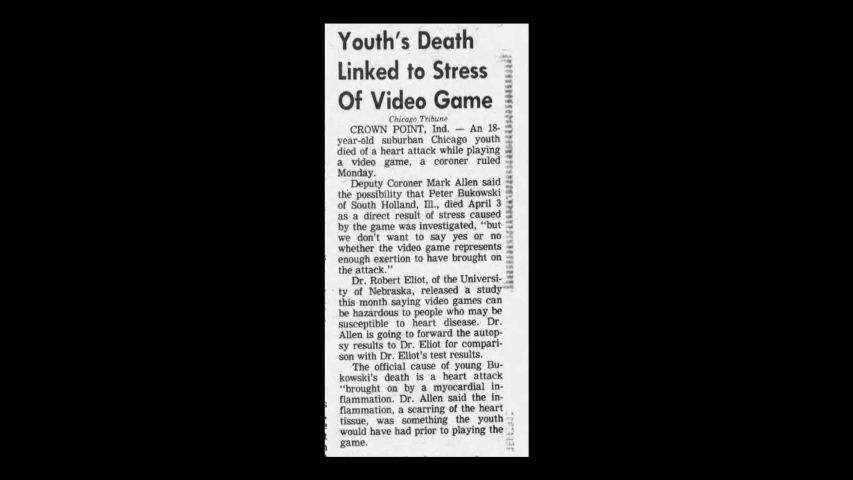
“Crown Point, Indiana – An 18 year old suburban Chicago youth died of a heart attack while playing a video game, a coroner ruled Monday. Deputy Coroner Mark Allen said the possibility that Peter Bukowski of South Holland, died April 3 as a direct result of stress caused by the game was investigated, but we don’t want to say yes or no whether the video game represents enough exertion to have brought on the attack”
“Dr. Robert Eliot, of the University of Nebraska, released a study this month saying video games can be hazardous to people who may be susceptible to heart disease. Dr. Allen is going to forward the autopsy results to Dr. Eliot for comparison with Dr. Eliot’s test results.”
This study observed over 1000 patients playing various games, including Pong. It states “We have had heart rate increased of 60 beats per minute and blood pressures as high as 220 within one minute of starting a computer game”. However Dr. Eliot had no comment to make on the Bukowski case.
The news report continues; “The official cause of young Bukowski’s death is a heart attack ‘brought on by a myocardial inflammation.’ Dr. Allen said the inflammation, a scarring of the heart tissue, was something the youth would have had prior to playing the game”
Despite some corners of the media sensationalising whilst simultaneously villainising video games, it seems then that Myocarditis, which Bukowski must have had prior, was the main cause at play here. How and what caused this in the first place is unknown, but it could be seen how the harsh weather, which is confirmed by reports that day, combined with the physical exertion of getting to the arcade beforehand, could have contributed to his death.
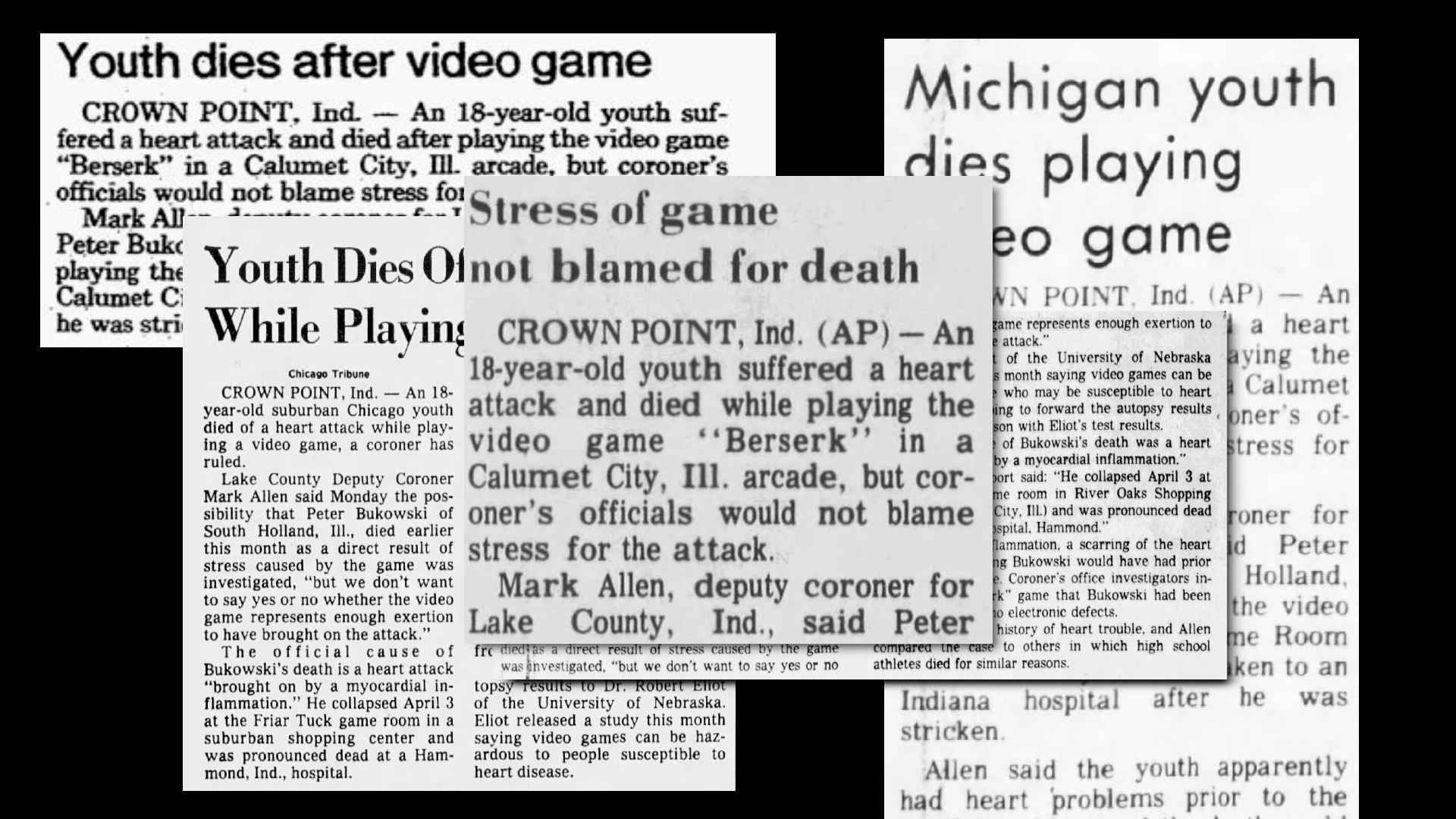
However in an article for Video Games Magazine in October 1982, Allen did go on record to specify “Though the autopsy found unsuspected scar tissue on Peter’s heart that was at least two weeks old, Allen believes it’s possible that the stress of the games triggered the attack in Peter’s weakened heart”, going on to say “Peter could have died in a number of stressful situations. We once had a boy who had a heart attack whilst studying for an exam. It just happened that he died in front of a video game”.
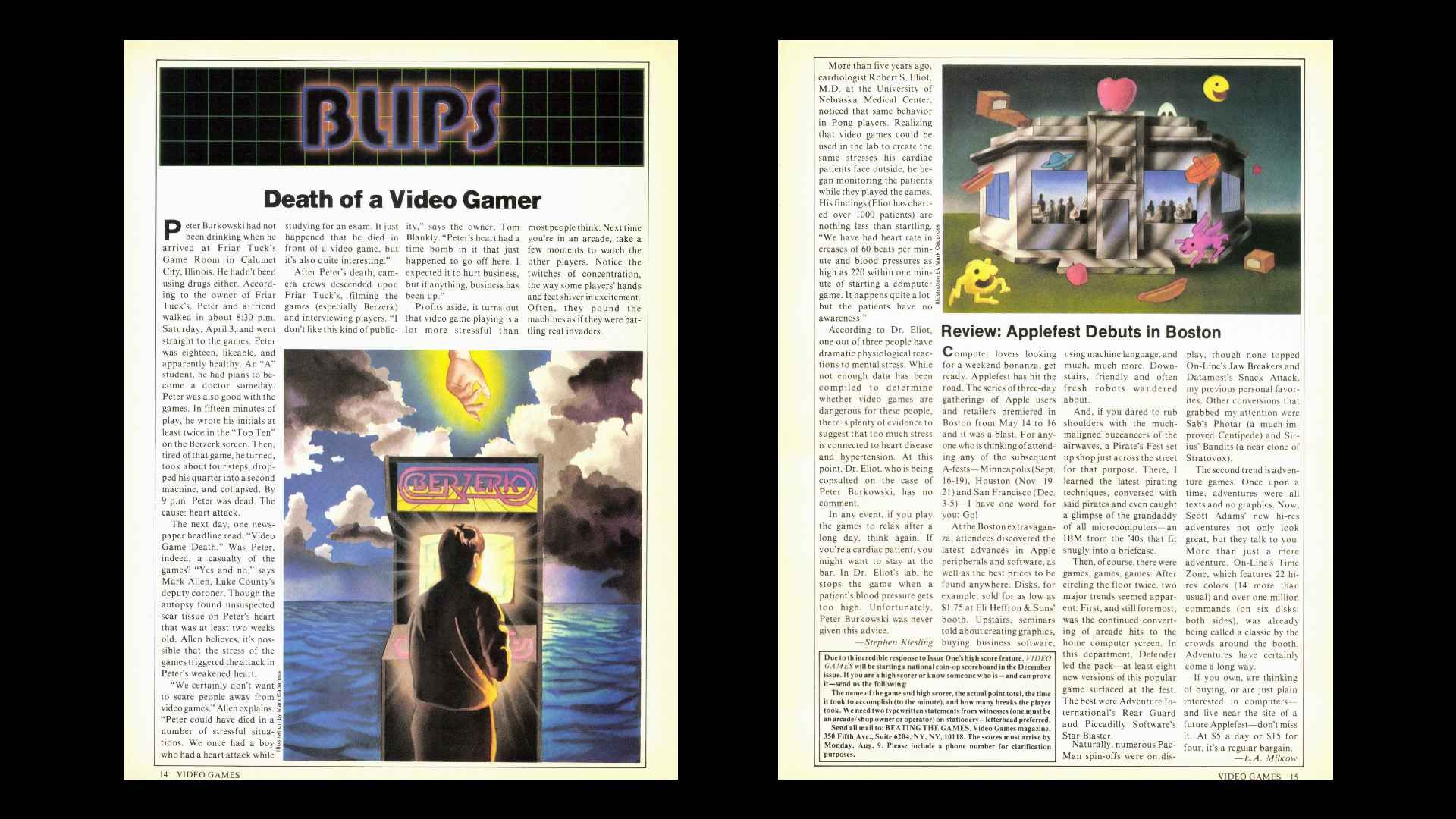
This is also the first full story on the situation that actually Mentions Berserk, written by Stephen Kiesling.
There had been mentions of Berzerk in the press previously. But the reason it was mentioned was because there had been an electrical safety test of the machine to rule out that cause of death. Even the more balanced new sources didn’t want to rule it out.
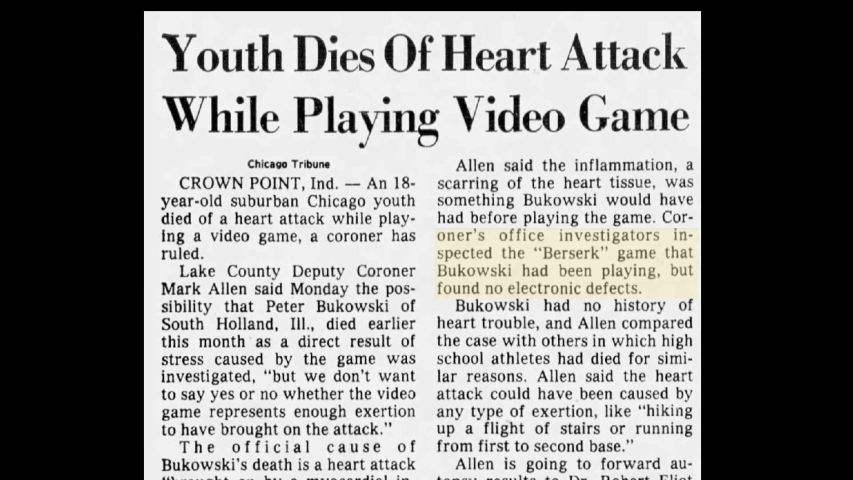
“An 18 year old youth suffered a heart attack and died while playing the video game ‘Berzerk’ in a Calumet City arcade, but coroner’s officials would not blame stress for the attack.
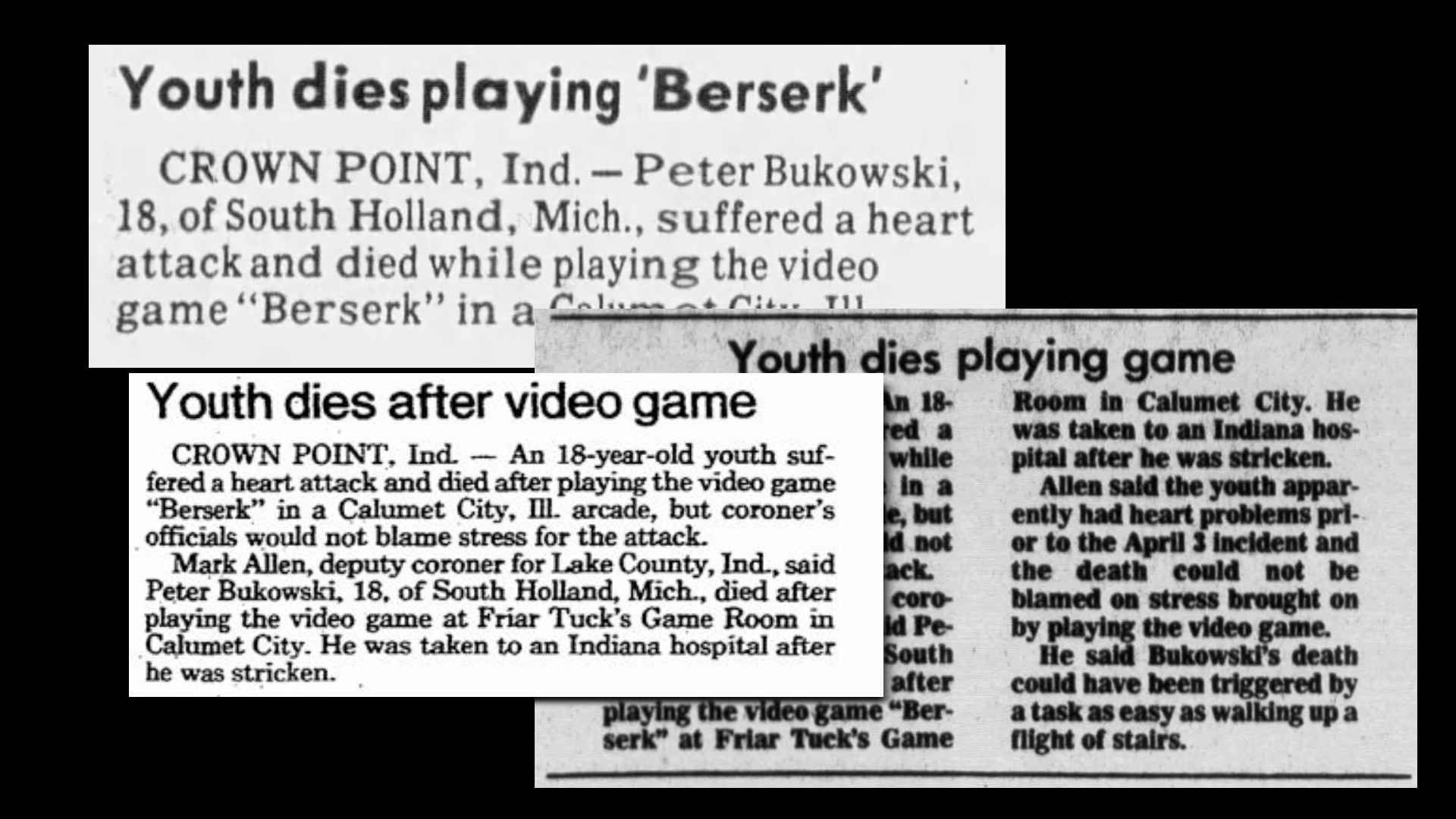
So Berzerk is both indirectly blamed, and also not blamed at all. So, how about we look into the case of Jeff Dailey, to see if that clarifies matters…
Jeff Dailey
According to various websites, including the wonderfully named retro-bitch.com which seems to have dug pretty deep back in 2015, it was that little known independent magazine called Video Ace which first published the story, but this was after Video Game Magazine published their article in October 1982. However this article itself notes that Video Ace only released two issues in 1981 before going defunct. Which kinda ruins the timeline. In addition, I can’t find any reference or indication that a magazine called Video Ace even existed around that time. Which isn’t to say it didn’t. I just can’t corroborate it.
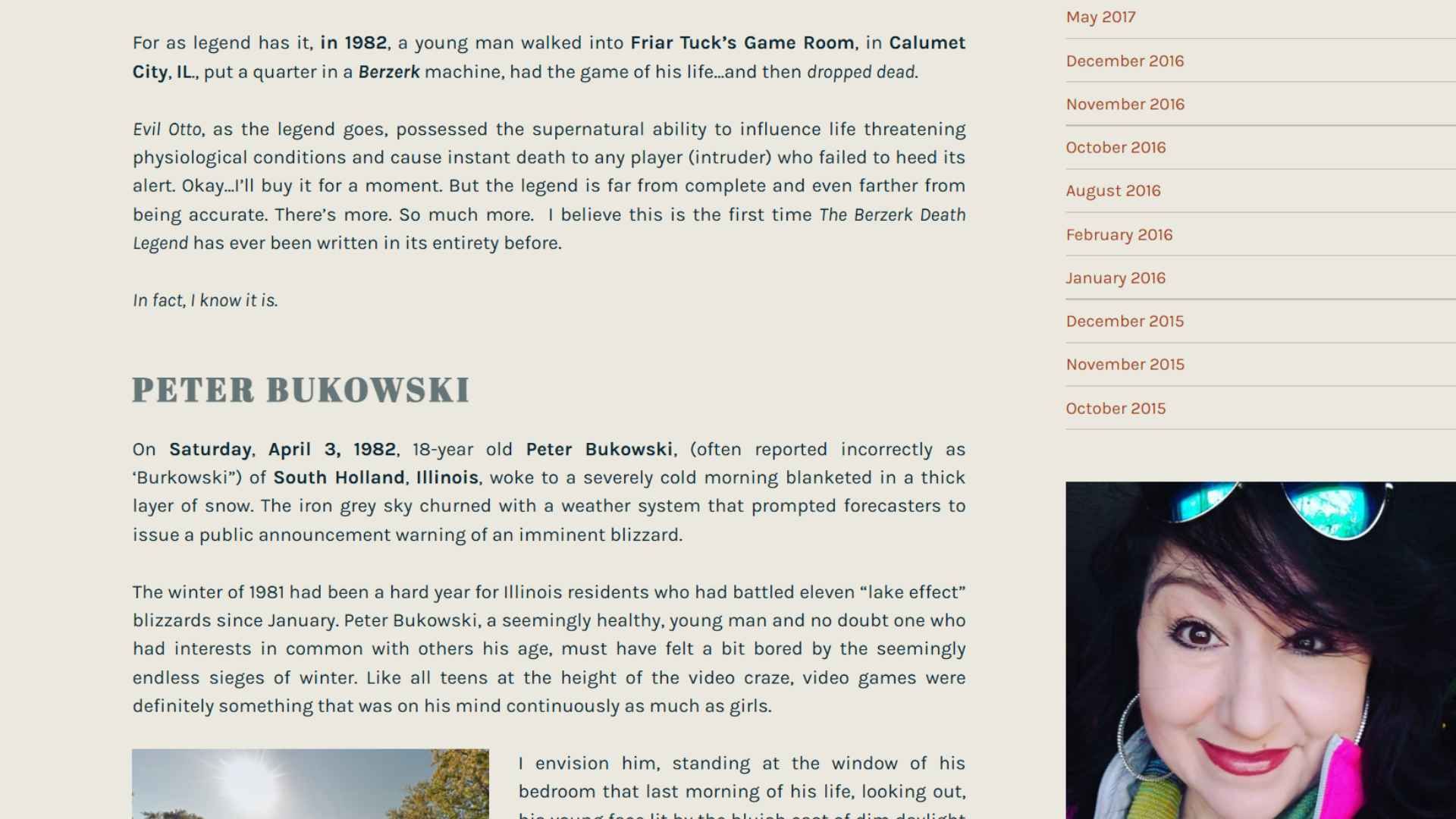
The first instance I can find of Jeff Dailey’s case is actually a usenet post from 24th August 2002. Here, Sir_Lans-a-lot writes “I understand that one person died because of an electrical fault in the machine rather than from fright”, whilst Sune goes on to quote a classicgaming.com article, whose earliest save in archive.org is 26th November 2002.
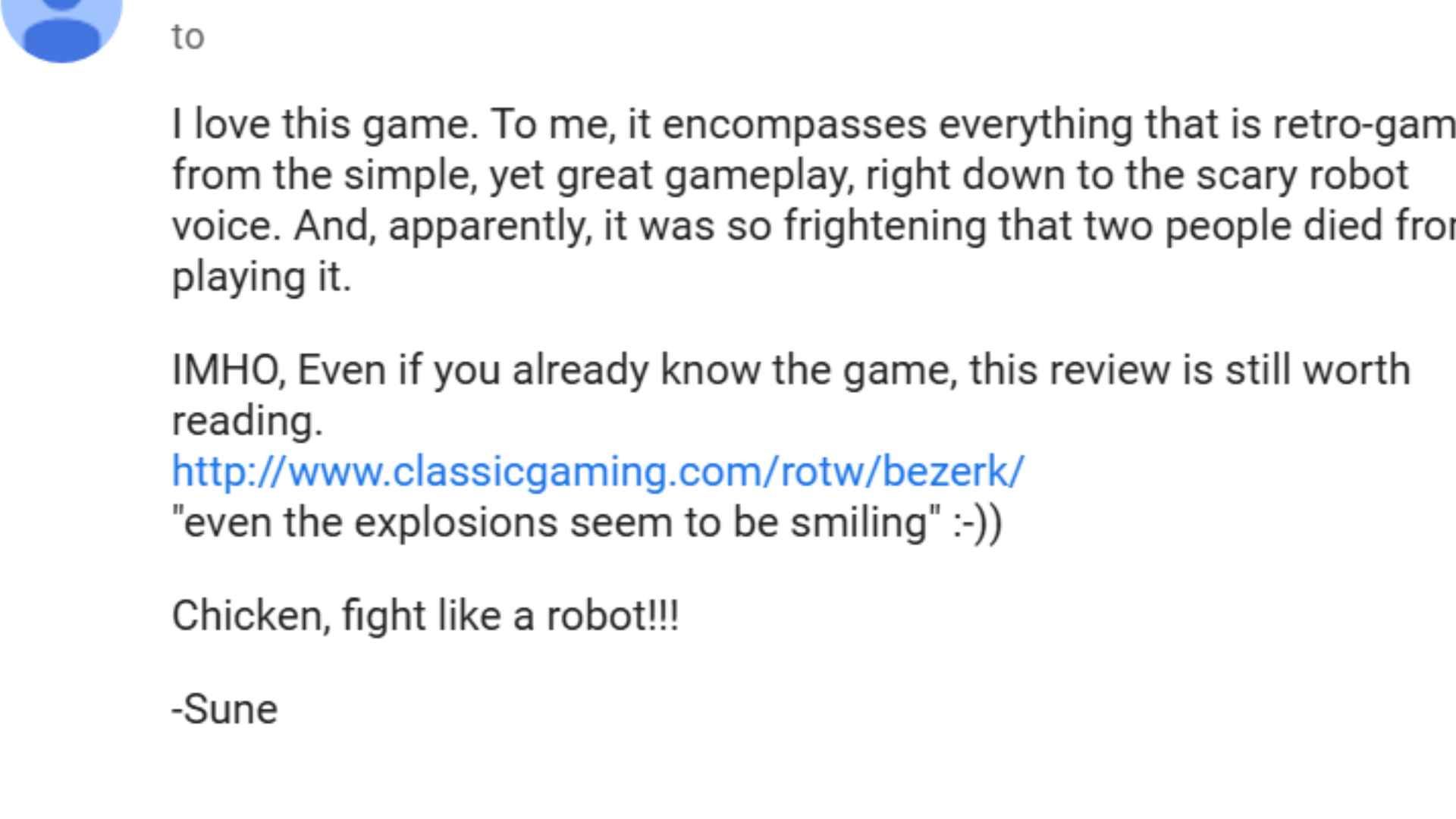
This review of Berzerk states; “Berzerk is a game that strains the nerves. This became frighteningly apparent in 1981, when 19-year-old Jeff Dailey died of a heart attack after an intense Berzerk session. The following year, an 18-year-old named Peter Burkowski suffered a fatal coronary after attaining two Berzerk high scores in succession. Berzerk will always carry the unfortunate distinction of being the first arcade game to be blamed for killing a person outside of the video screen.”.
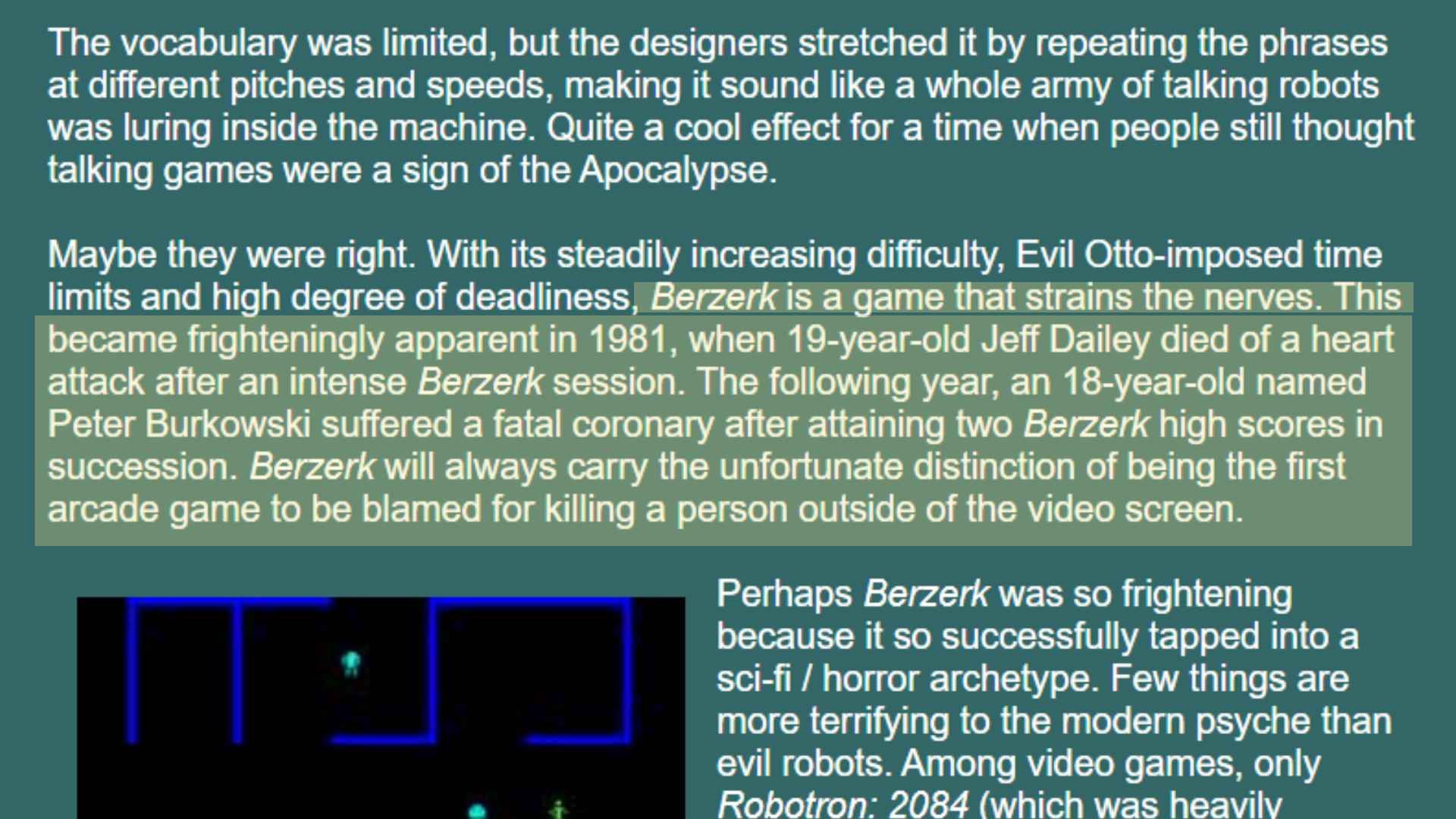
From there, more instances of the story appear, but they are all incredibly limited in their details. For example, the May 2003 issue of PlayStation Magazine has a segment on being Hardcore, yeah, that was a thing, but at the top is a little note on being Dead Core;
“In 1981, 19 year old Jeff Dailey died of a heart attack after an intense Berzerk arcade session. How hardcore is that?!”
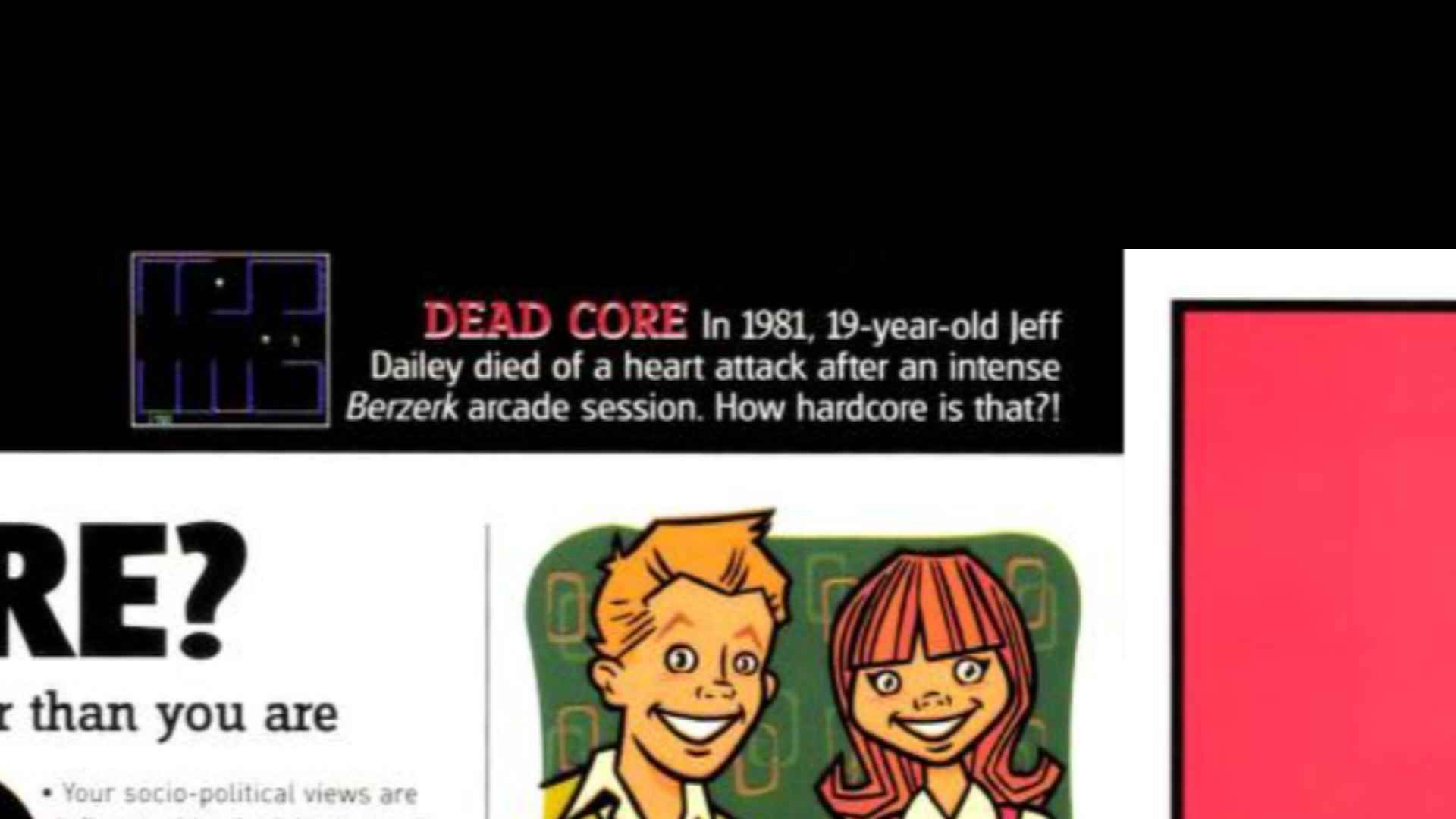
The main sentence is almost a word for word copy of that from classicgaming.com.
Hyper Magazine from October of the same year also mentions the story in its “Top 10 Influential Arcade Games”;
“the game is the cause of the first documented arcade death, where, after obtaining a high score, 19 year-old Jeff Dailey died of a massive heart attack”
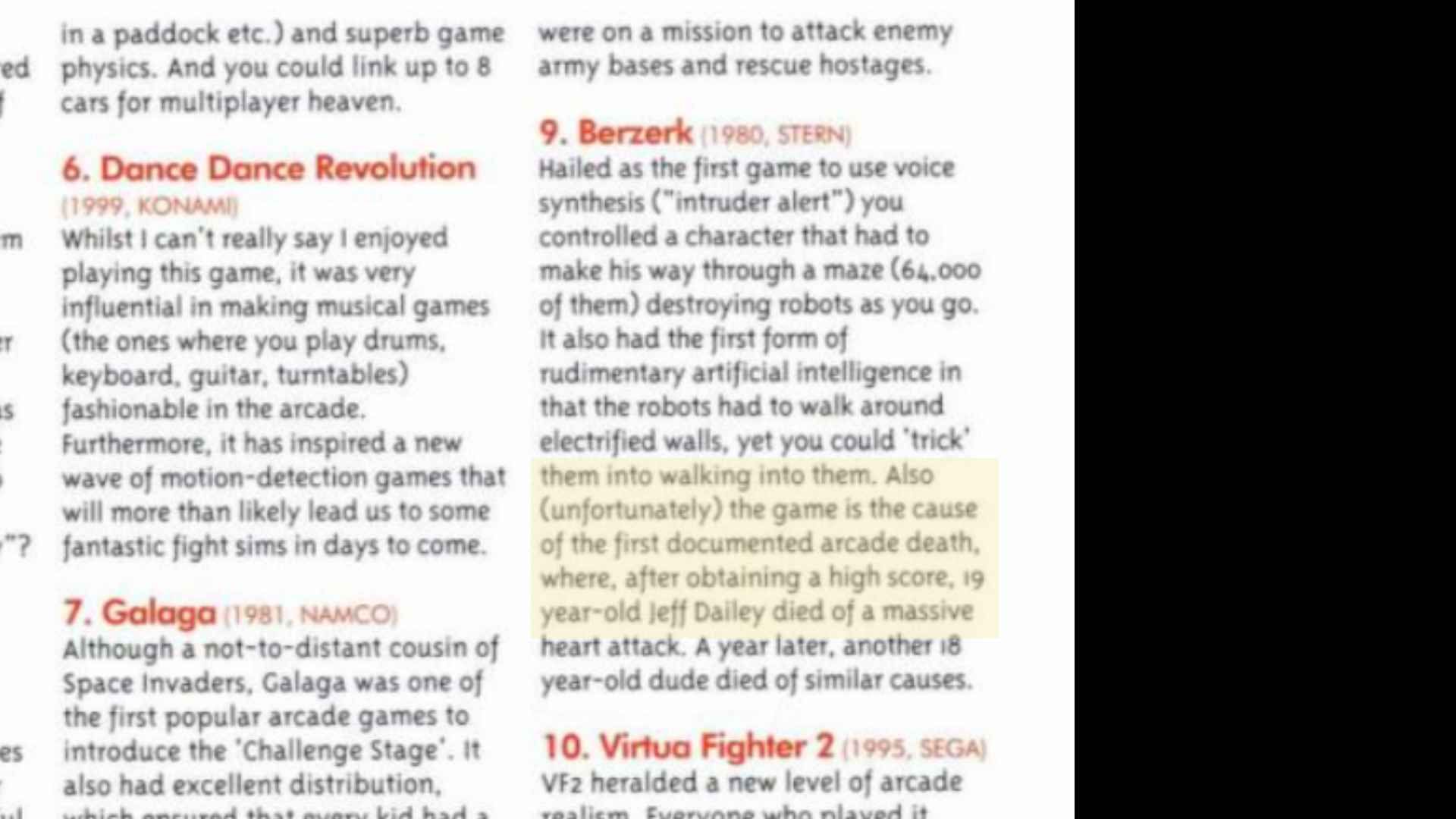
Ok, so we get a little more information this time, nothing concrete. But apparently Jeff obtained a high score whilst playing Berzerk. Peter Bukowski’s story is also then mentioned.
In March 2004, PC Zone went on to place Berzerk at 32, in its top 100 controversial games;
“In January 1981, 19 year old Jeff Dailey died of a massive coronary after playing the hectic and increasingly challenging game. More than a year later, in October 1982, 18 year old Peter Burkowski keeled over after about 15 minutes on Berzerk (having made the high score list twice) and was dead within 30 minutes having suffered a heart attack. The autopsy revealed scar tissue on Burkowski’s heart which the coroner believed could have been from the prolonged stress of playing the game”
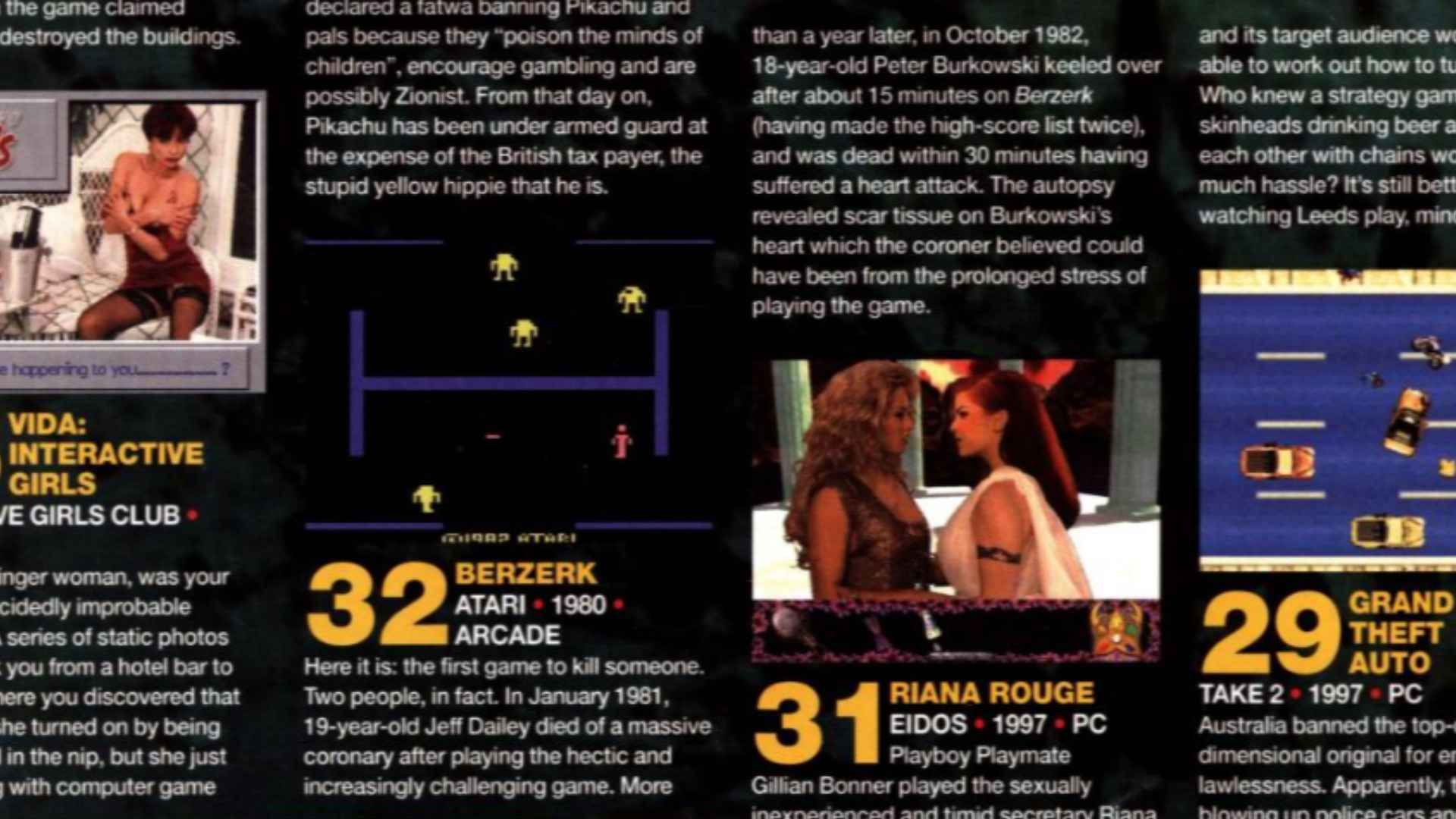
Now, here we have further irregularities. Jeff Dailey’s tale is just a copy of original sentence, with added exciting words, whereas Burkowski now apparently not only made the high score list twice, but his scar tissue was apparently now directly from the prolonged stress of playing the game.
We can explain the high score list claim, as that came from Video Games Magazine. A claim which is originally without source but sometimes quoted as being from the owner of the arcade, but I can’t find any corroboration for that. But the scar tissue being BECAUSE of the game, well that’s just false.

This, then is the wonderful world of media sensationalising, the stirring things up to make it more compelling for the reader. We all do it. I’m sure I’ve done it, even in some of my videos. It’s like when you recount a story about how you went down a pub and fell over with your beer to your best mate, but you zing it up a bit to make it seem more exciting. Maybe you were carrying two beers, and you smashed one directly into the face of a passing granny, who’s false teeth fell out into your other glass. You see your friends eyes widen as you’re telling the story, and it feels better than the boring, dull as shit truth. At least until the guilt of lying sets in.
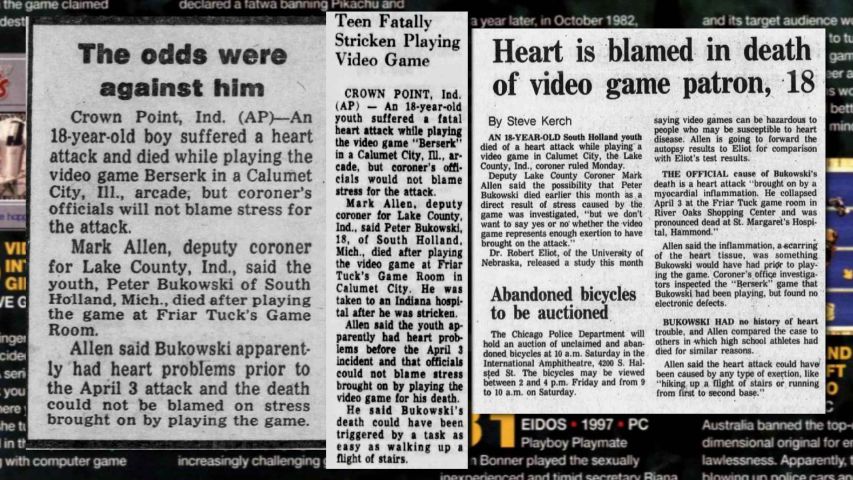
But, this is how reality gets warped, and facts become, well nonsense.
You’ll also note that the incorrectly spelt Burkowski, now died in October 1982, rather than April. Probably because that Video Game Magazine article came out in October 1982, and that was the key source of reference. We’ll come back to that later.
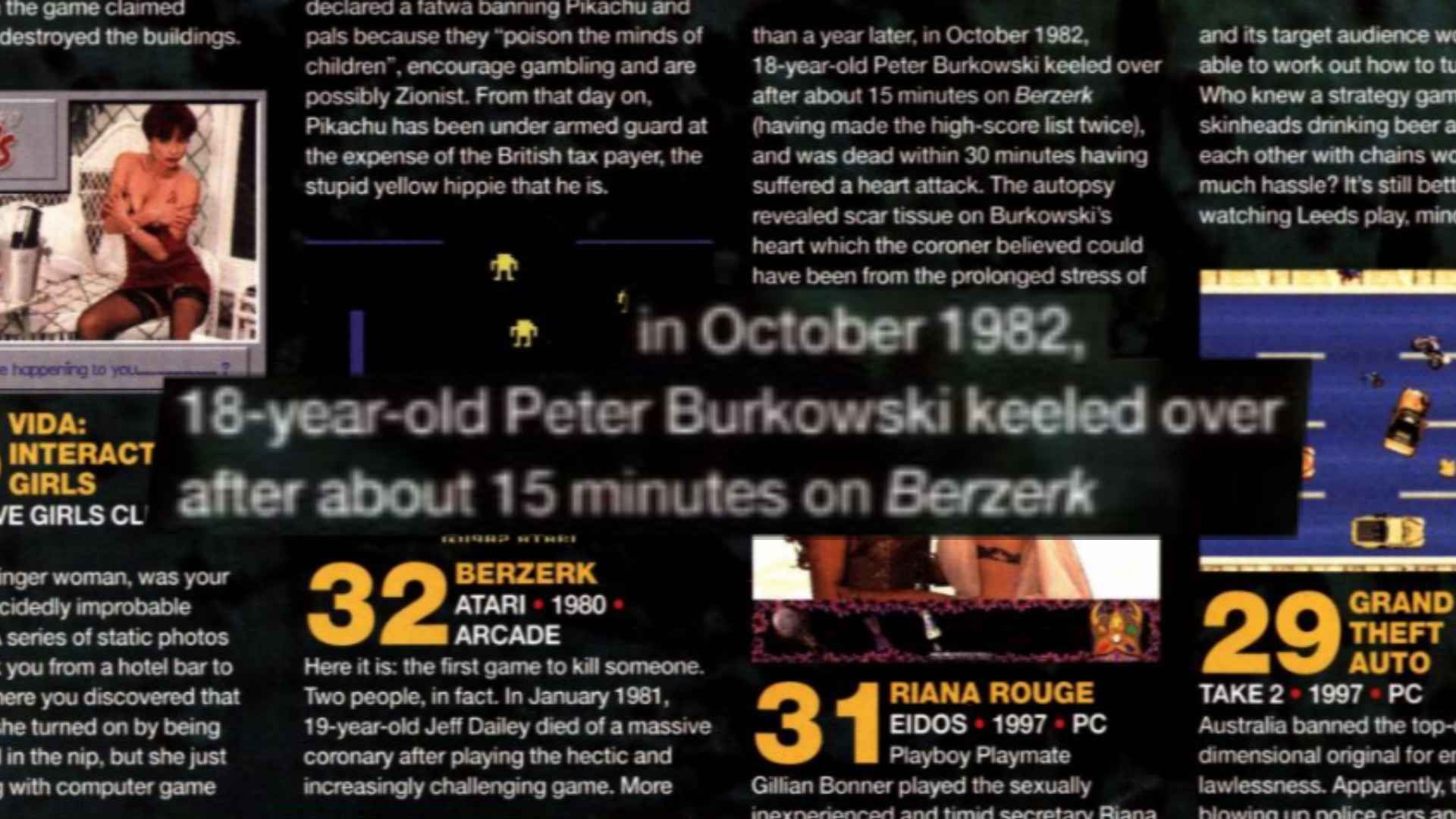
We don’t know what the genesis for the Dailey story was, but there is also no evidence that anyone was talking about it, until the now defunct classicgaming.com wrote about it, suggesting that perhaps this is the genesis point for everything that followed.
The Jeff Dailey story would continue to appear in various books and media, often alongside Bukowski, with each slightly warping the facts in a different direction, until it got here.

arcade-history.com is a website whose first capture was on the 5th August 2003, where it appears to have been setup by a Alexis Bousiges. Crawlbots were unable to scape any usable information until 16th August 2004, when it was clearly still a site in construction, with users encouraged to submit games and facts. But it wasn’t until 6th May 2007 that the site structure became logical enough for an entry to be saved. This means that we can’t be entirely sure when this information was added or by who. But we can confirm that on the 30th October 2007, the Berzerk page now gives this story a terrifying and mysterious edge;
“In January 1981, Jeff Dailey was the first person to die playing a video game, a 19-year old Berzerk player, died of a massive heart attack right after playing his favorite game. His score was 16,660 (a very respectable score but disturbing for obvious reasons).” Before mentioning the other two incidents.
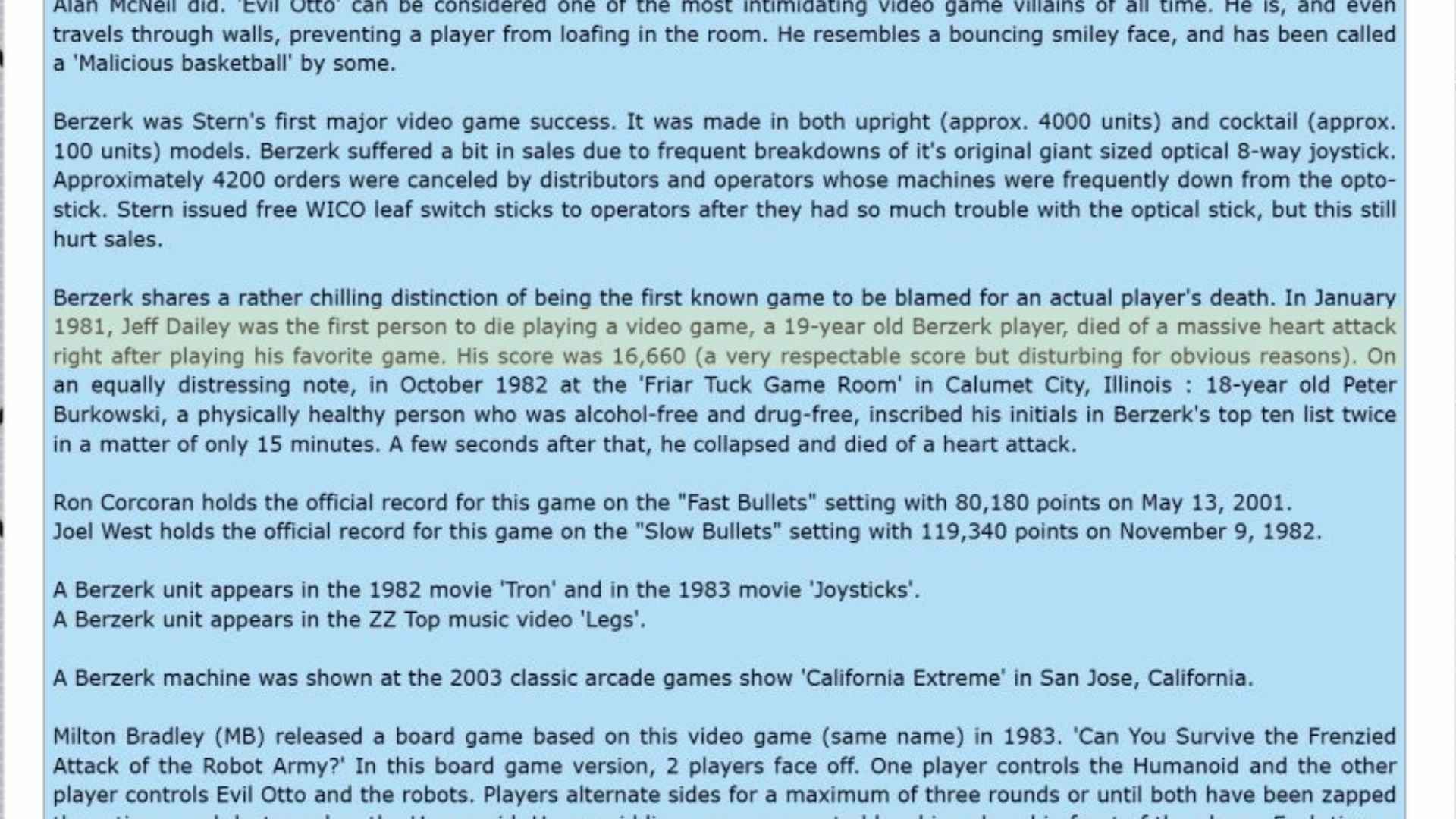
But there are three problems with this high score. The first is that this score hasn’t been mentioned in any stories prior to this, that I can find at least. The second is that, actually, this isn’t a huge score to get on Berzerk, especially for a seasoned player, who would be playing for far longer than the 3 minutes the game was originally intended for. The third is that, WHO THE HELL IS SEEING THEIR FRIEND DIE AND THEN GOING “OH SHIT, BETTER MAKE A NOTE OF HIS HIGH SCORE NOW HE’S COPPED IT”. It just doesn’t make any sense. None of this makes sense.
It has an air of corruption about it, similar to the Polybius story. A video game that was supposed to have appeared in arcades around Portland, Oregon in 1981, and which caused psychoactive and dangerous responses in players. All traces of this machine, seemed to have vanished, until it was reported on a coinop.org entry in the year 2000. Another site which keeps a record of arcade games and facts about them. The fact that both of these machines seem to hail from the same point in history, is strange, and potentially suggests that perhaps Polybius is just a misremembered Berzerk. However, let’s stay on track.
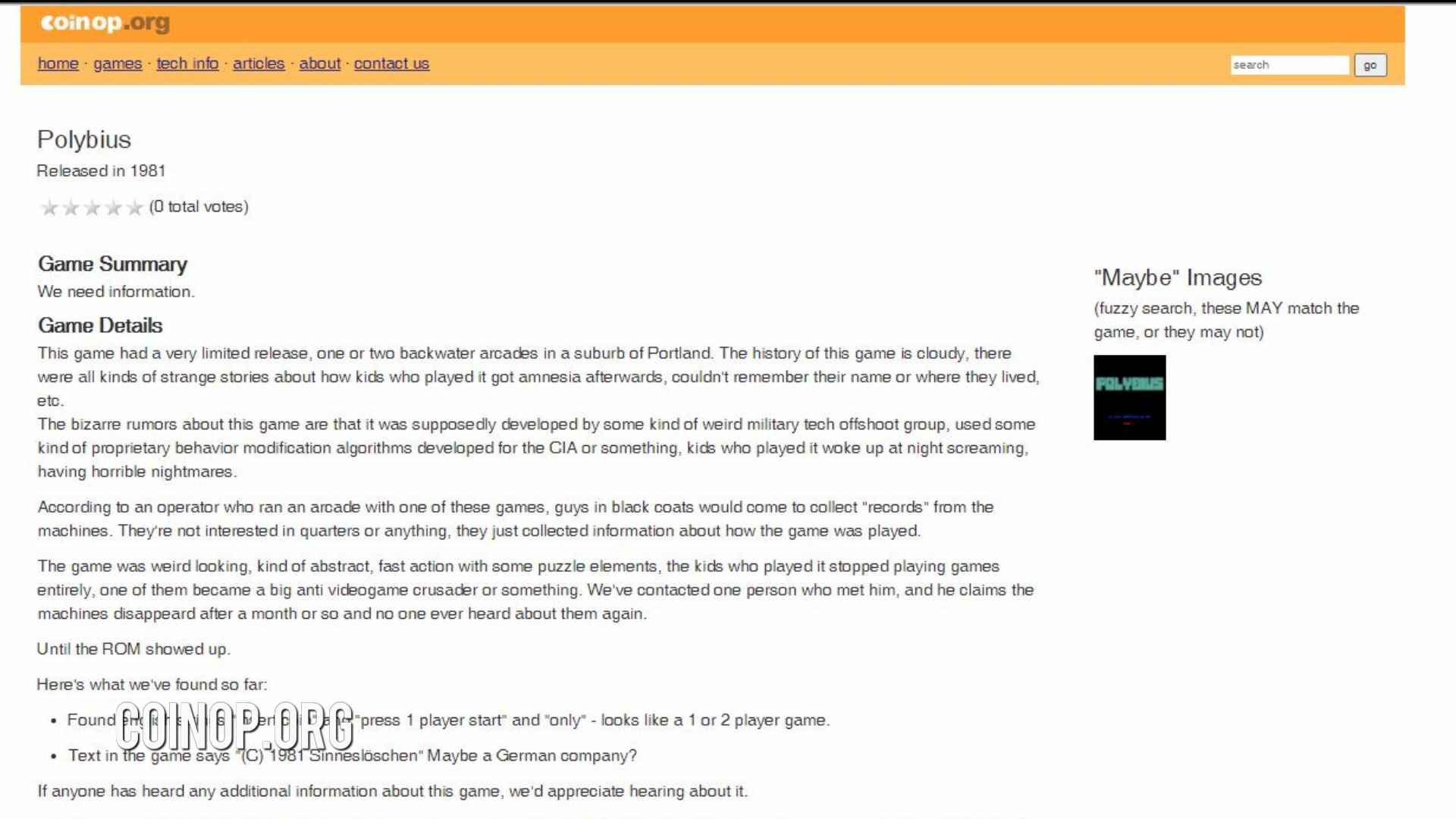
Jeff Daily. Now, there is one component of this story which is valid. There was a Jeff Dailey living in Virginia in 1981, he was 19 and he did die. The problem is, he didn’t die from playing Berzerk.

This is Jeffrey Alan Dailey, of 353 Benton Road, Suffolk, as reported in the Sunday edition of the Suffolk News Herald, on 31st May 1981. Dailey was a member of the Suffolk Christian Church and he worked for the Norfolk and Western Railway.
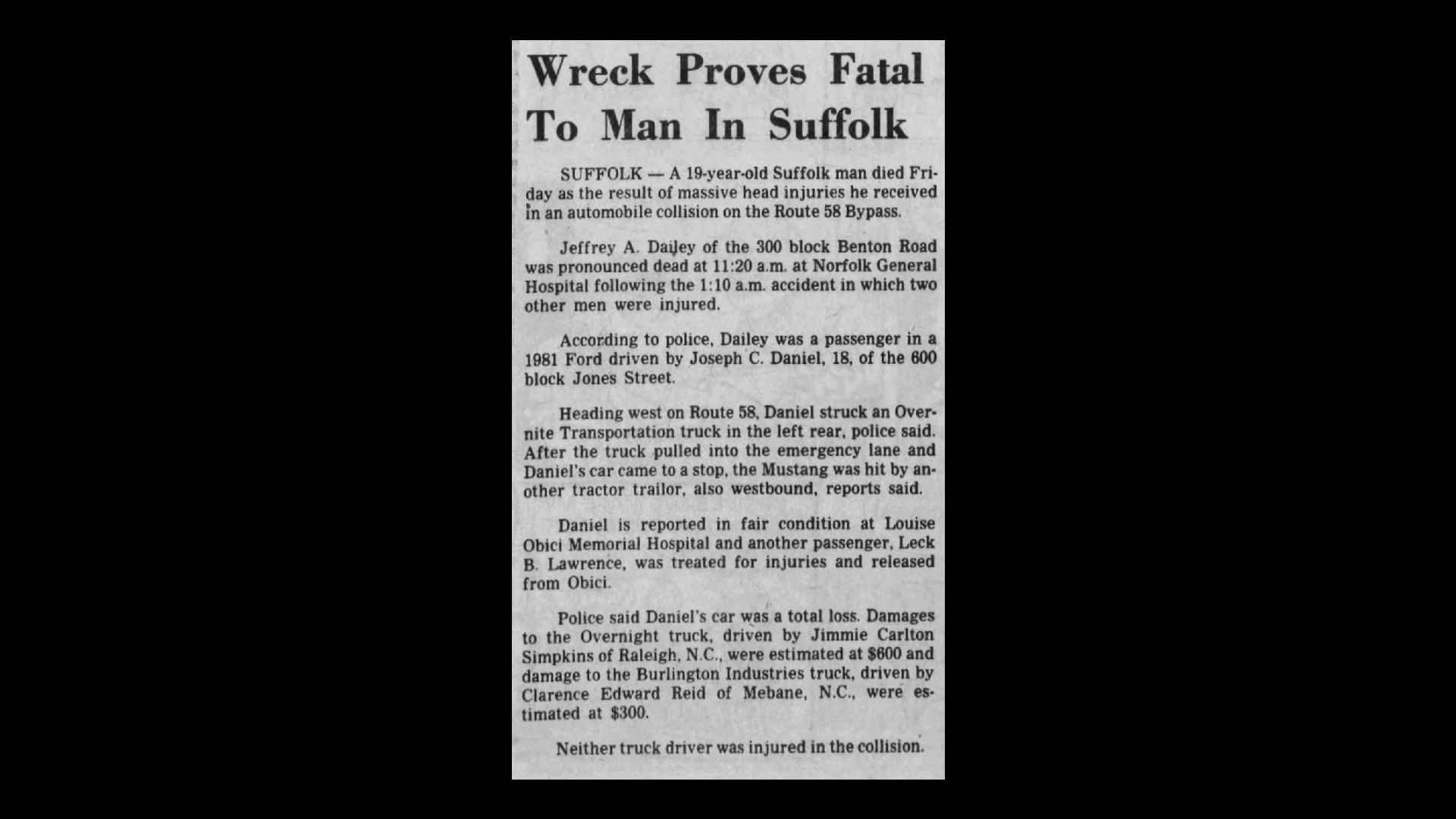
He died on Friday 29th May during an automobile collision on the Route 58 bypass. The incident, involving two other men, occurred at 1:10am, with Dailey succumbing to his injuries at 11:20am.
This is the only instance I can find of a Jeff Dailey dying during that year, and although tragic, has nothing to do with Bezerk or a stress related heart attack.
It seems then, that this story was fabricated, probably in a bid to bolster the Bukowski story and make Bezerk seem like a dark, dark game.
One story is nothing, two is exciting and three?? Goodness me.
Edward Clark Jr.
Which leaves us with Edward Clark Junior, which is a very different story. It doesn’t involve a video game induced death at all, unless you believe that there’s some kind of curse related to the arcade machine, and specifically the one in Friar Tuck’s Game Room. By itself, it’s meaningless, but when tied to two other mysterious deaths, then it becomes far more absorbing.

A report in The Times from 2 days after the incident corroborates that the initial incident took place in the arcade at 6:30pm, with an employee breaking up the fight. However, this Thomas Blankley says “From what I’ve been told, Clark started the fight”, so he was actually asked to leave first, with Pedro Roberts leaving after the car park was clear. Then Pedro proceeded to approach Clark and stab him in the chest.
That’s the opposite way round to initial reports.
What is clear, however, is that here is no mention of Berzerk in this article at all. Of course, why would there be. No one is going to care what machines these kids were playing just before one of them was murdered. That would be incredibly anecdotal, unless the story about the fight over the coins was true.
In fact, any news story you look at for this incident has any mention of Berzerk. The only thing that ties it to Berzerk is that it occurred in or outside Friar Tuck’s Game Room. The place where Bukowski died.
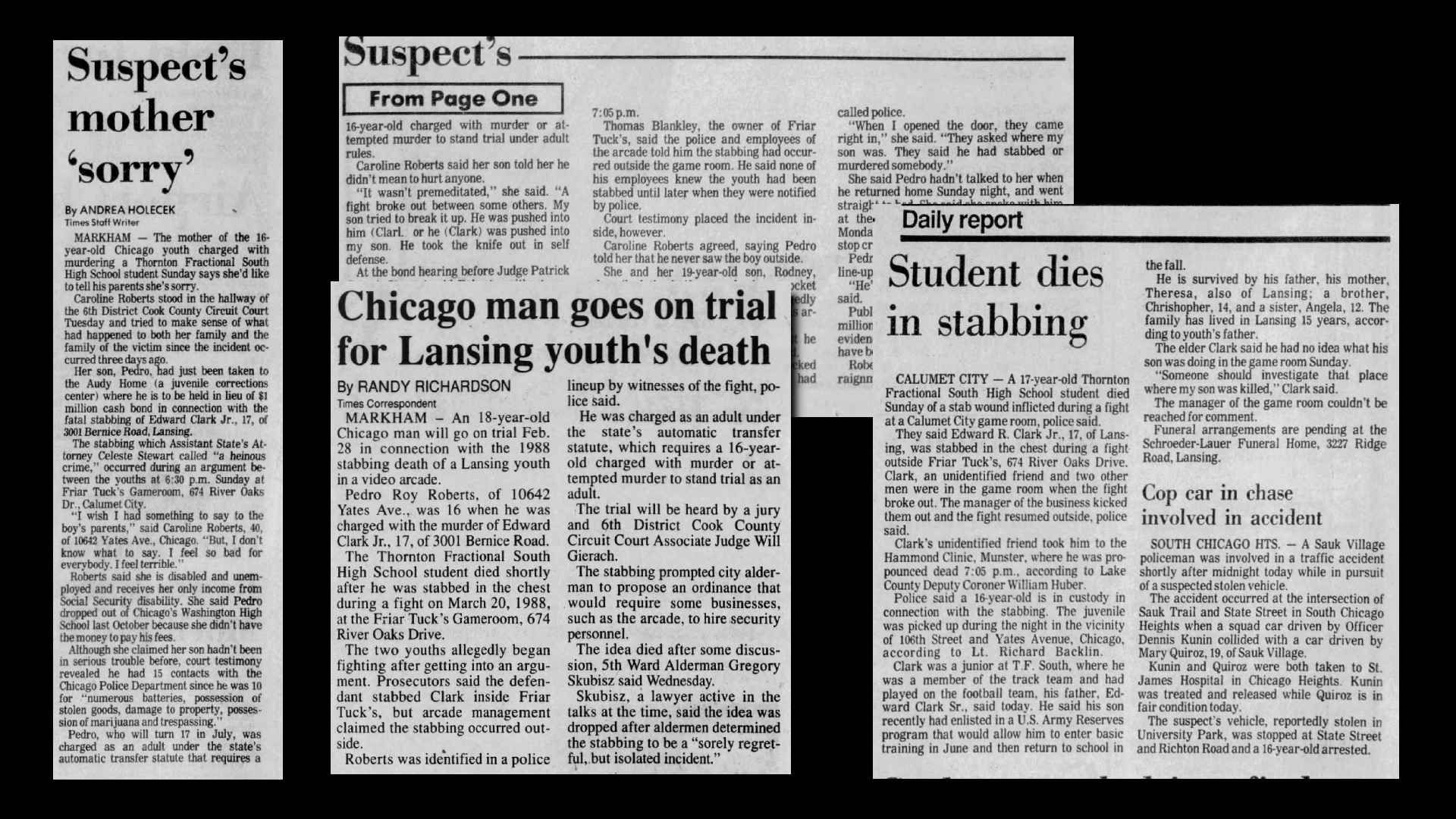
We can even peek a little into the trial that took place some two years later. If details are going to appear anywhere, they’re going to appear in court.
Pedro Roy Roberts would plead guilty to a reduced charge of second-degree murder in the 6th District Country Circuit Court. The plea agreement established that Roberts stabbed and killed 17 year old Edward Clark Junior in self defence during a fight at Friar Tuck’s Gameroom on March 20th 1988. This meant that by 1993, he was eligible for parole.
According to testimony “Clark stepped into a fight that had broken out in the arcade in defense of a friend and was grabbed from behind by Roberts. The two exchanged punches, then Roberts lunged at him with a knife. “The kid was scared and he pulled a knife,” Public Defender Thomas Pendergast said. “It’s an unfortunate case.” The Thornton Fractional High School student died from a stab wound to the chest that lacerated his heart, according to a medical examiner’s report.”4
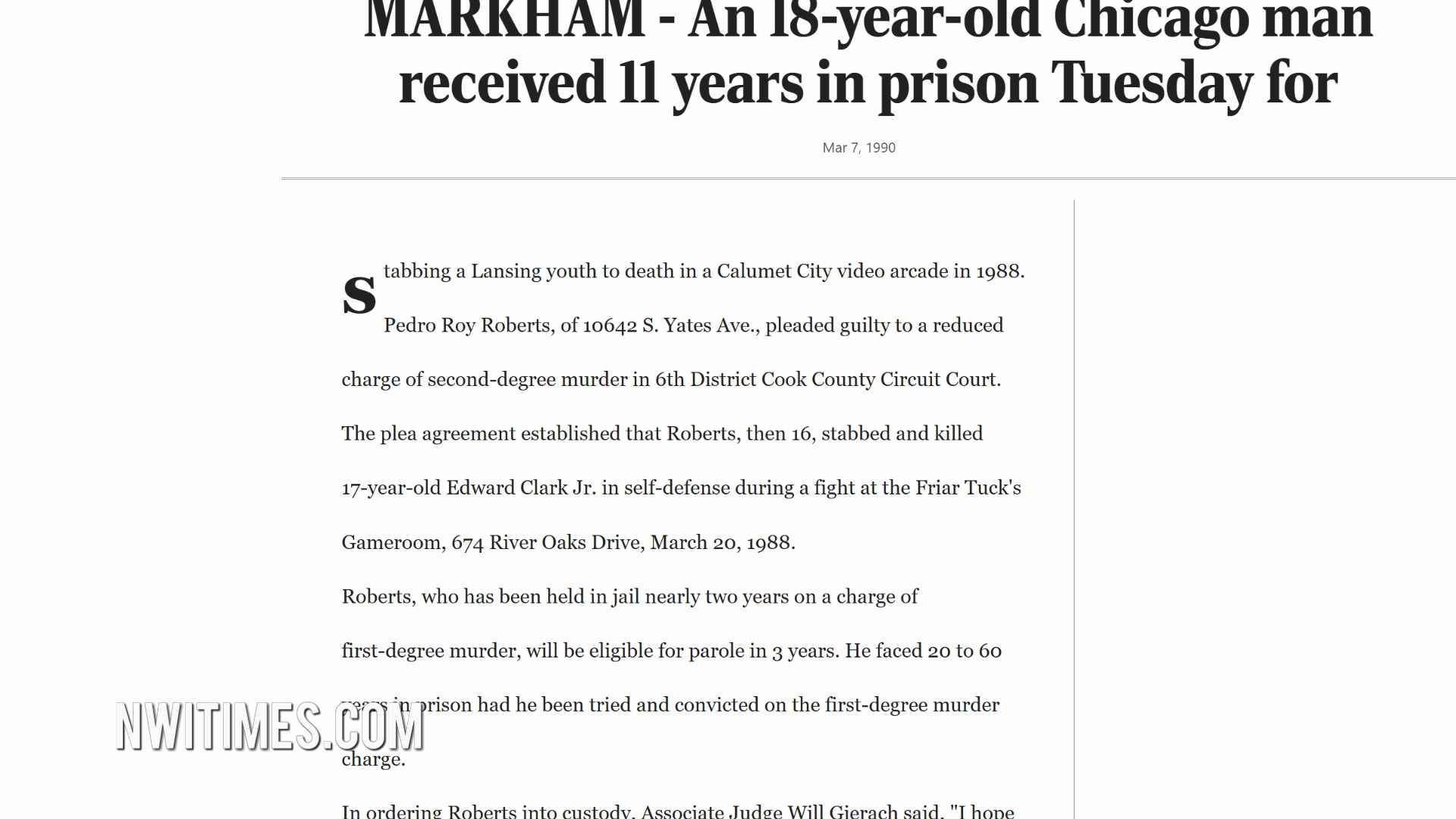
There is no mention of why the fight instigated, or that it progressed outside as claimed by Friar Tuck’s Game Room. Only that Clark had stepped into it. The games in this instance are largely irrelevant.

TRUTH
Which means, really, we only have one single case that involves Berzerk. Something that the creator of the game himself mentioned in a Retro Gamer interview from February 2008;
“The unfortunate fellow was obese and had run upstairs to play the game,” Alan explains. “The legend is he set a high score and died, but the owner of the arcade said he didn’t finish the game – he was out of breath from the moment he arrived until he dropped. The legend is way better than reality: the excitement of playing a game killing a player after setting a high score…”
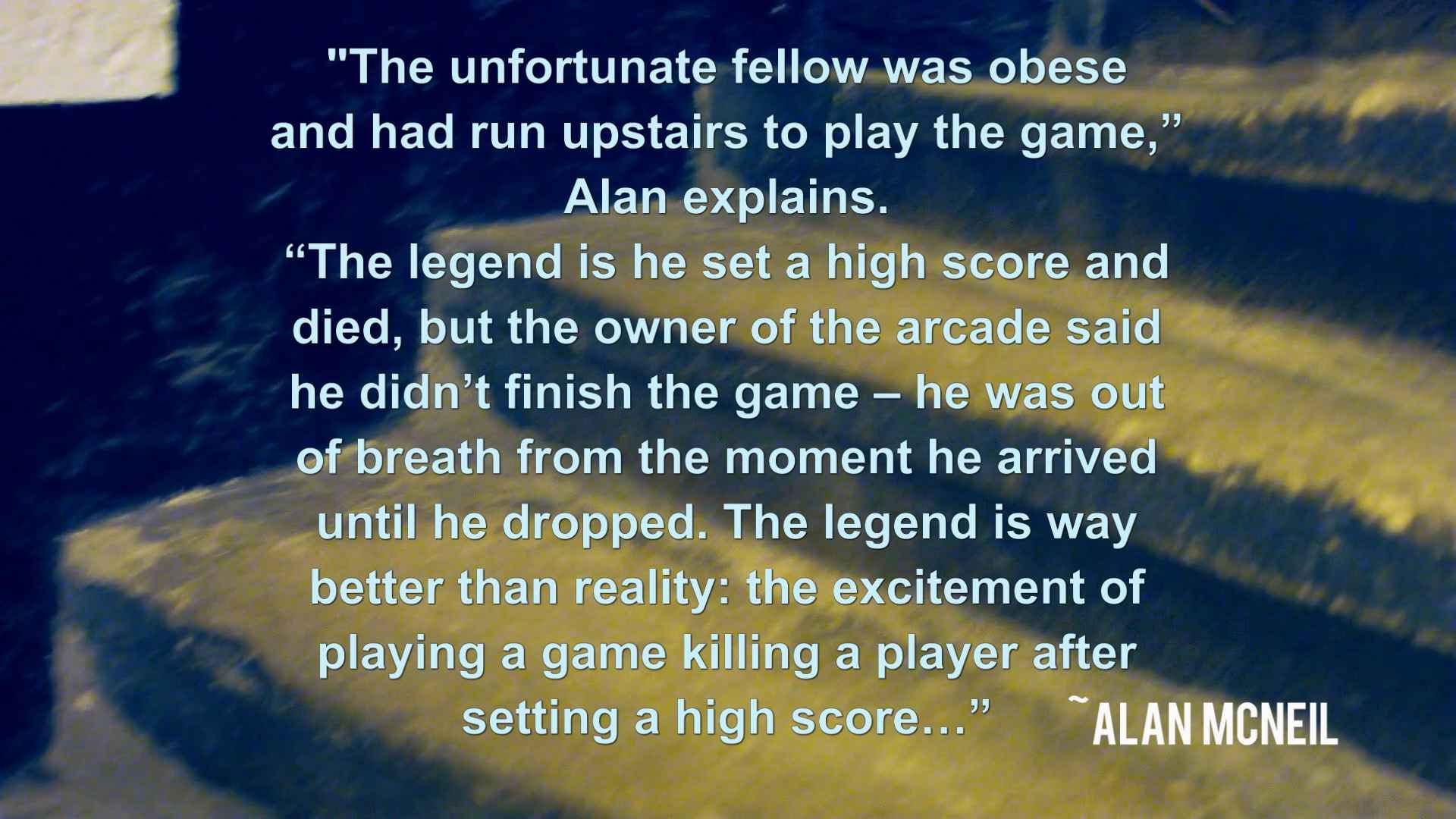
It seems that McNeil had probably assumed the lad was obese, despite there being no reference to this. What there is reference to in some articles, is walking up steps, but it’s an example, not a factor.5
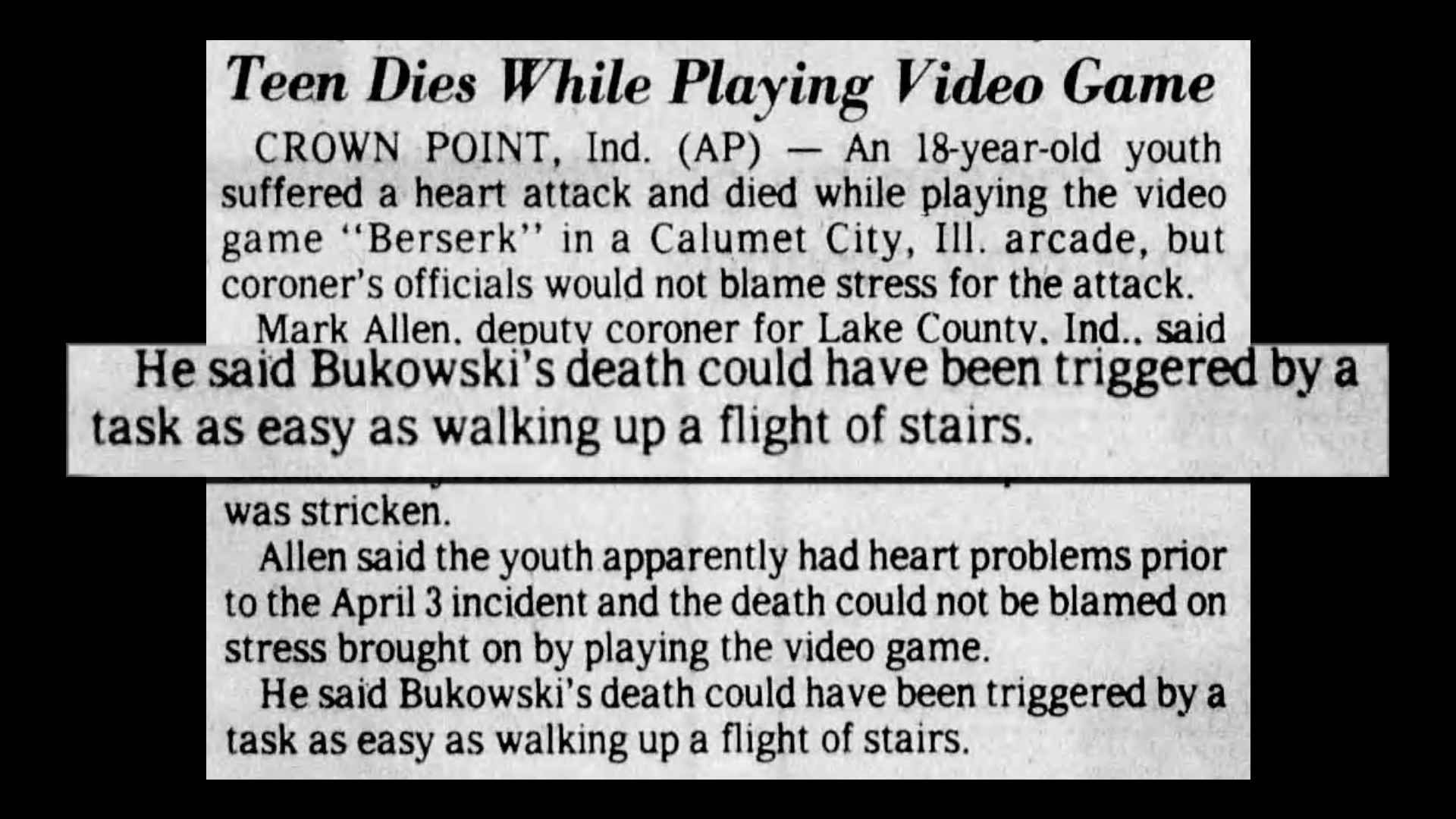
This then, appears to be the Bukowski story, albeit with some slight addition of obesity. Something that is refuted by stories of the otherwise healthy 17 year old, but like most of these tales, it’s easy for things to become twisted, altered and indeed elaborated upon until they almost seem like a different story entirely.
Just like McNeil’s original words were.
And so, this is why documenting the truth is so damn important. News travels fast, and when it travels, it tends to get warped, it tends to get sensationalised, and when it does, it even picks up new details and factoids, which simply aren’t true. If the base material, is already on shaky ground to begin with, or the writer of an article has a particular bias (or invested interest) in a particular angle, in this case: games, which a lot of people have wanted to criminalise and outlaw over the years, then what started as a tragic story of a kid dying, quickly turns into a focus about something else entirely.
In this case, Berzerk.
Which sells far more papers, and generates a lot more interest than a simple heart attack. Which, in a way, makes this process a whole lot darker than Berzerk ever could be, even with Evil Otto.
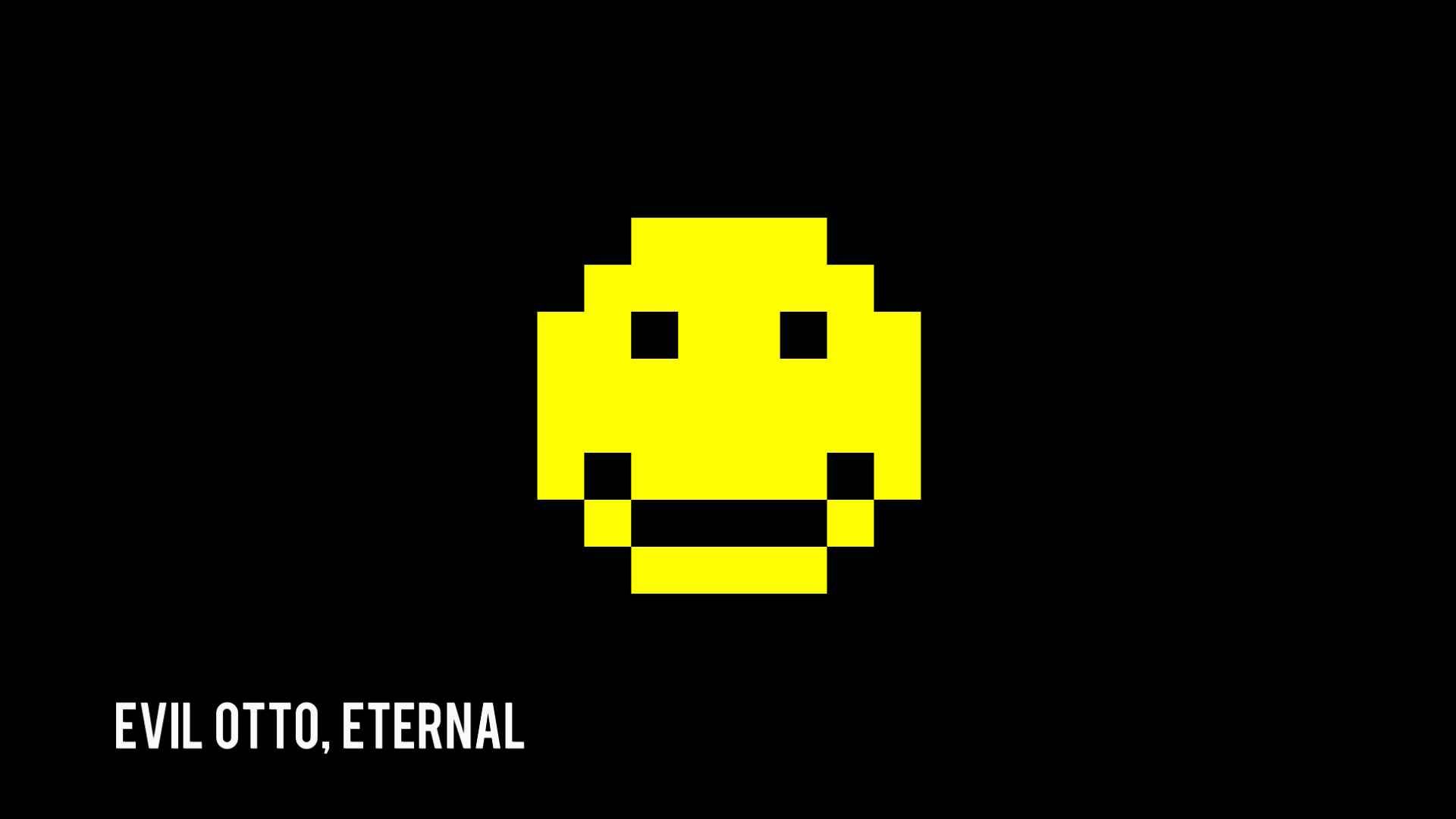
That Video Games Article…
So, maybe before we close this case, we should revisit the BLIPS article that most of this palaver stemmed from. The Genesis for everything that followed. That article in Video Games, with a big picture of Berzerk that ignited the senses, and ultimately made the kids want to go out and play the arcade machine, and the adults to condemn it for life. That story was written by Stephen Kiesling. Which seems pretty important in itself, so I tracked him down and spoke to him. I really just wanted to get the low down on how this story came to be, but what I learnt was actually a lot more interesting.

It turns out that Kiesling was actually a journalist specialising in Health. In fact, he had just helped launch American Health magazine, and the article “Will Video Games Hurt Your Heart?” was a cover story.

Remember that study by Dr. Robert Eliot that was mentioned earlier? Well, yep, he was the guy who actually reported on that, just a few weeks before Bukowski died. Which is probably the strangest thing about all of this.
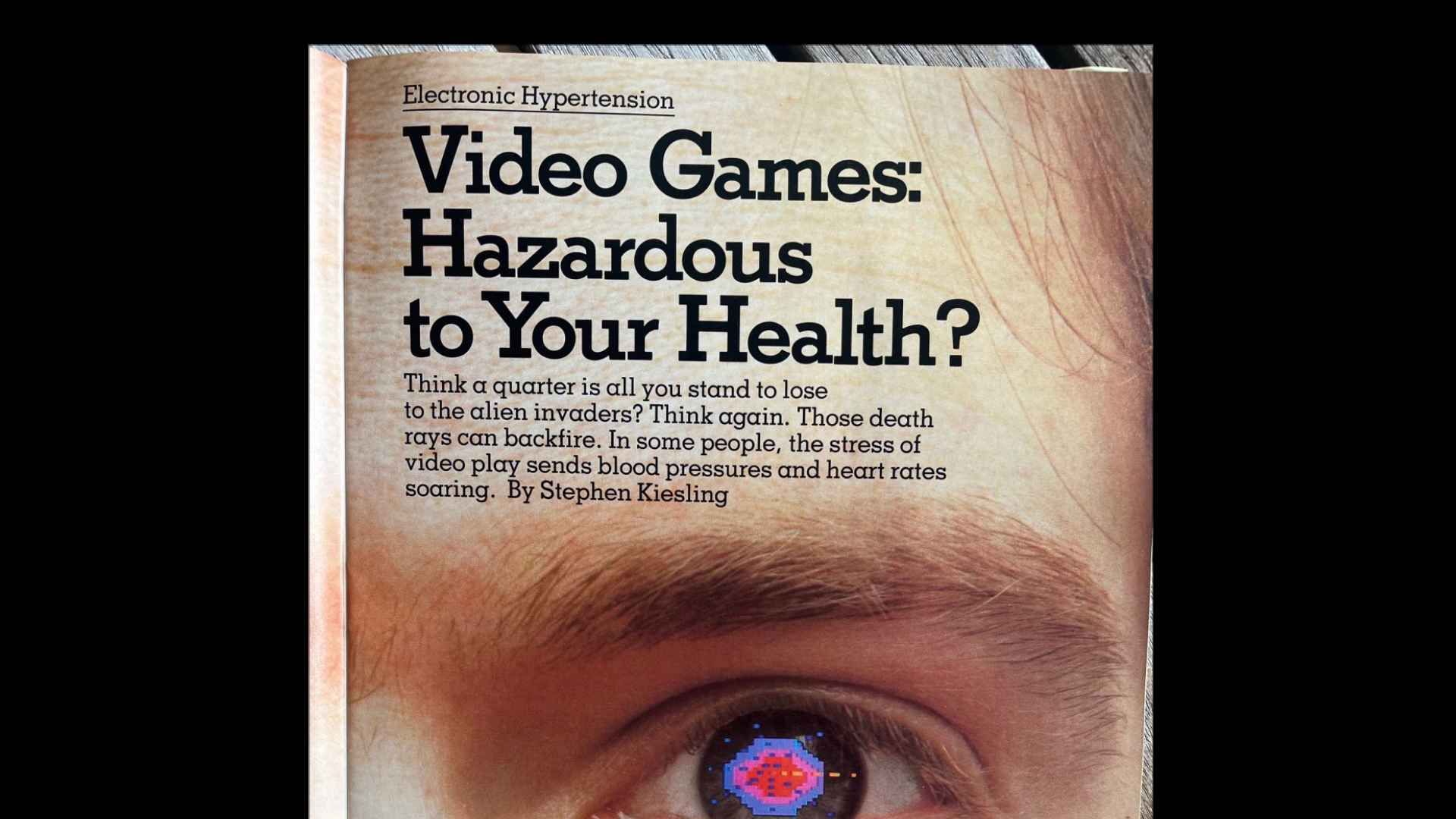
The article looks at Eliot’s work on so called hot reactor and cold reactors out of the study set. Cold reactors don’t tend to have any adverse reaction when playing video games, however, Hot reactors absolutely do. Eliot used Breakout to do stress testing on participants and found that for some subjects their body responds with signs similar to those of an athlete in action, but in seconds, rather than minutes, and with no physical action to vent the catecholamines excreted into the blood stream. This he deemed very bad.

The fact that Bokowski literally died weeks later, naturally pushed this work into the headlines, and shot Kiesling into the spotlight, including a segment on Good Morning America.
Off the back of this, Kiesling went on to co-create something called the Atari Aerobics Joystick, designed to combine physical activity with games, and sponsored by Suncom, this is actually him in the advert, but by his own admission it was a total flop.

The fact that these two events intersected then, is what led Video Games Magazine to feature this article by Stephen Kiesling six months after the incident. Just when Kiesling was develpoing this new bit of kit.
Kiesling told me that he doesn’t remember much about this particular article itself, but it was based on available reports and facts at the time. However, he also stated that Video Games Magazine added bits in after he wrote it. When he read the print version, he was surprised by this.
It seems like adding details such as a high score element, somehow makes the story more credible or exciting. Perhaps by amplifying the point that the gamer MUST have had an intense session, thereby pointing the finger at the game. However if you think about if for a second if feels weird and out of place, a common theme when searching for the truth.
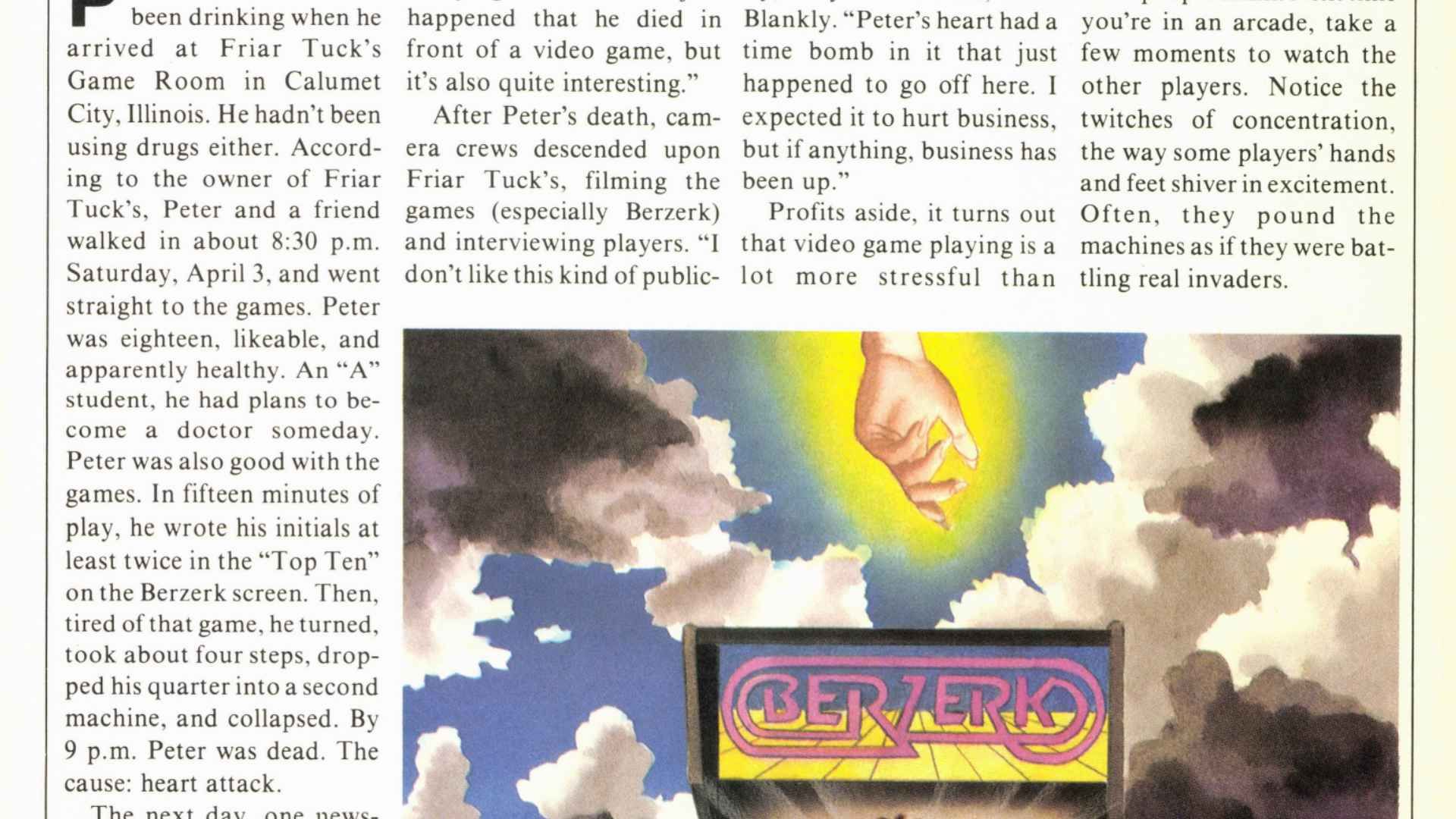
Kiesling also told me that actually, Dr. Robert Eliot did think that video games were the next Pearl Harbour, and was keen to highlight their risks. Although he wasn’t allowed to quote that at the time.
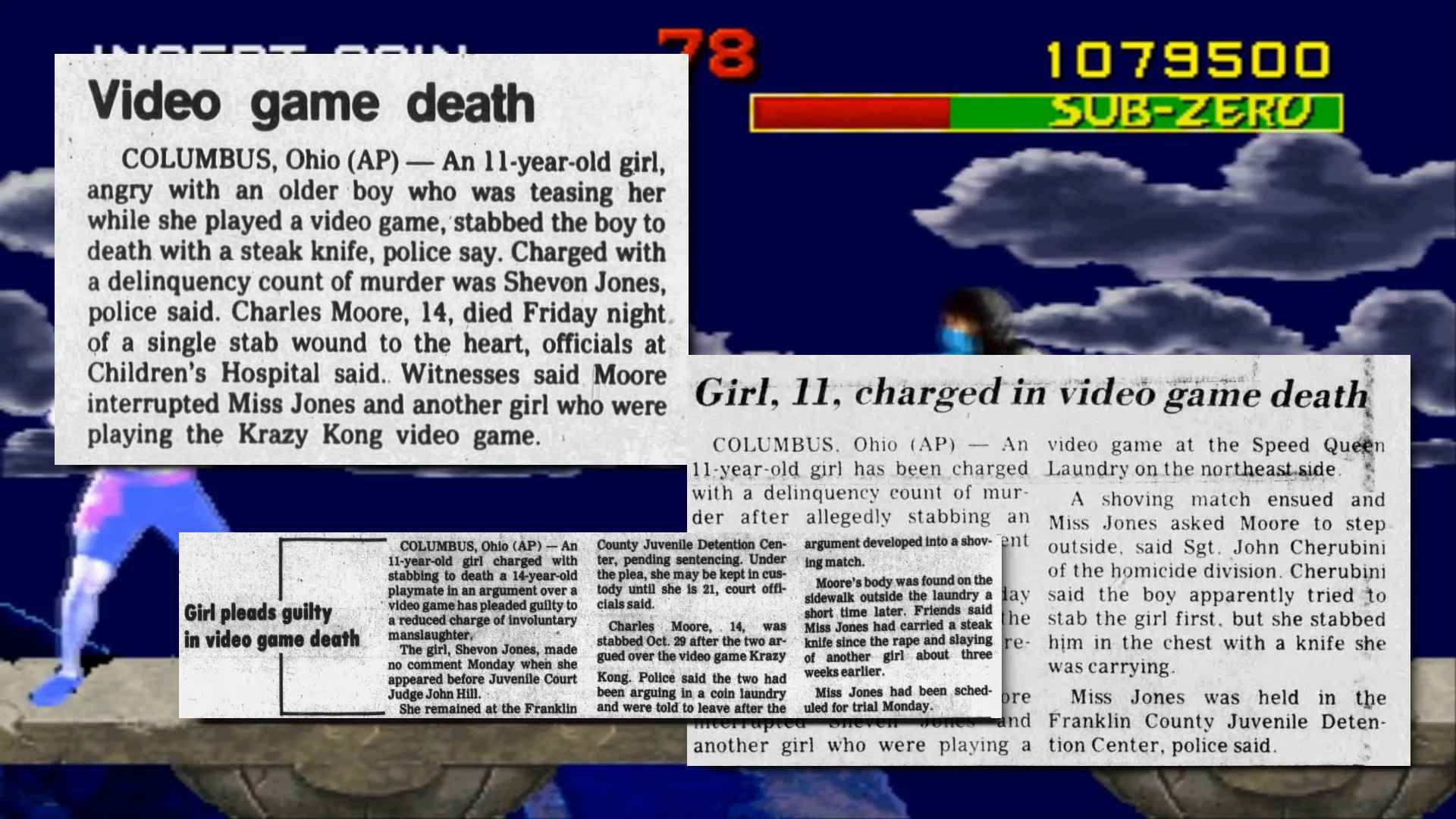
What it feels like is that, among the population, there was a desire, a want for video games to be blamed for something. Just like they were some 10 years later when Mortal Kombat arrived on the scene. There were even other news reports in 1982 about other games leading to deaths. The media thrives on blame and it thrives on sensationalism, because it sells. This blame was only ever going to manifest into a story, somehow, somewhere, and in this case, it seems like Berzerk was the fall guy.
and if you fast forward some 20 years, legends like this make for compelling stories.
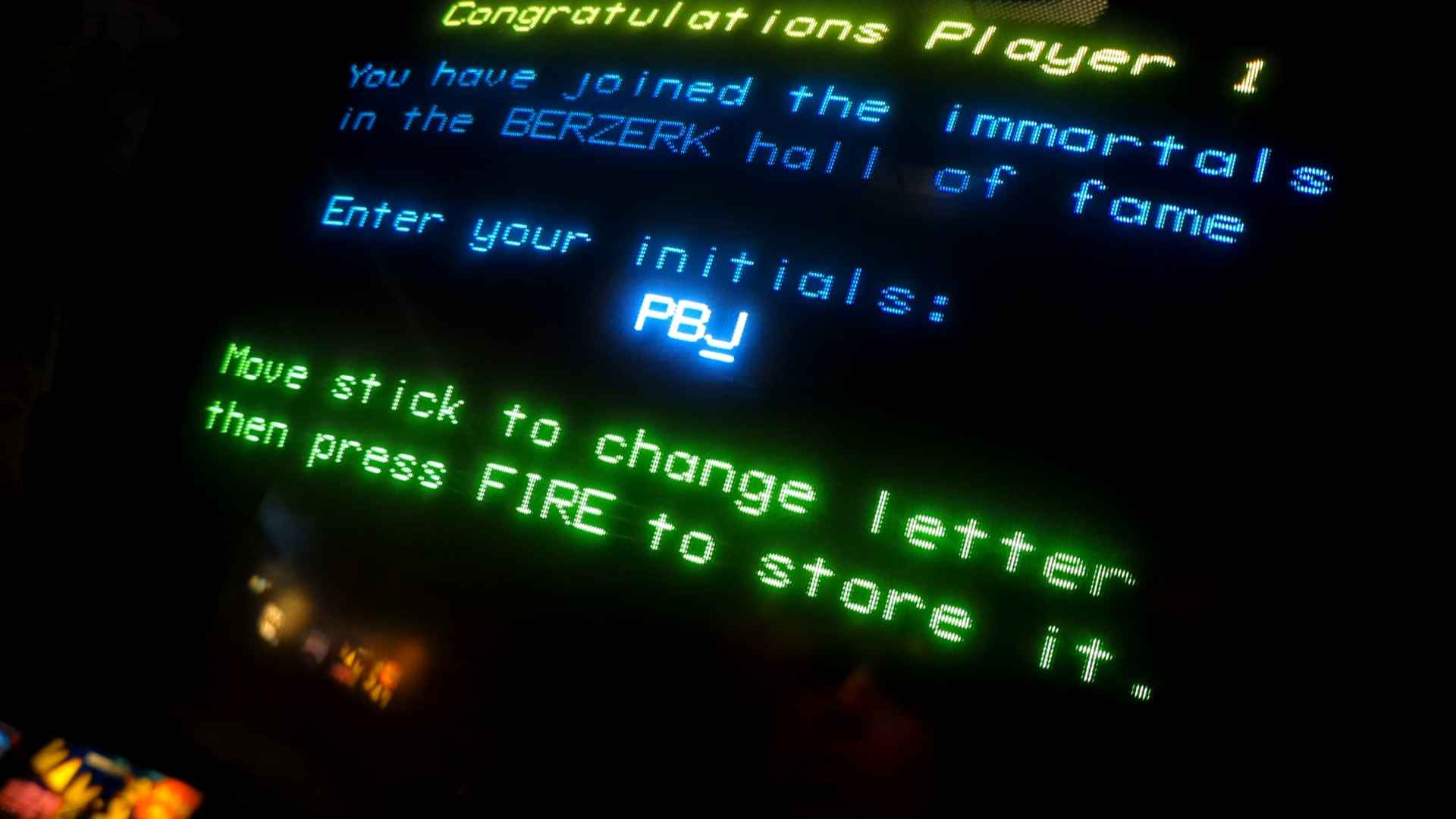
But, that doesn’t negate the study, nor does it negate the reporting. So, it is actually possible that Berzerk was at least partly responsible for the death of someone in the 80s. But then it’s also possible that any other game would have had the same effect.
Look a the blood pressure effects of a one-on-one Pac Man in this related article Kiesling wrote a few months later.
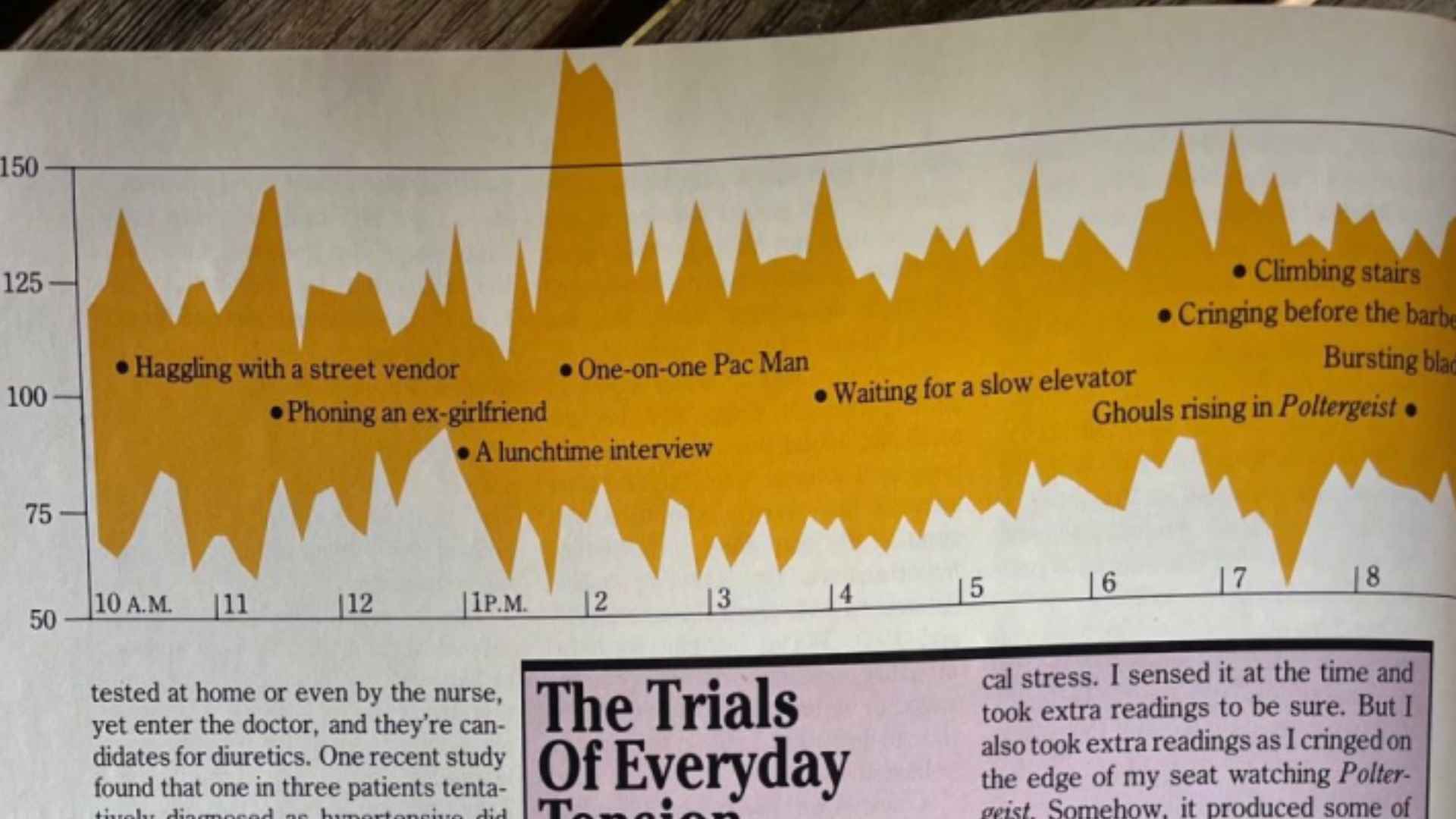
It’s pretty significant.
So. there’s nothing really mysterious about Bezerk at all. It’s a frantic game. It has interesting and quirky elements, including Evil Otto, but really it was just in the right (or wrong) place at the wrong time.
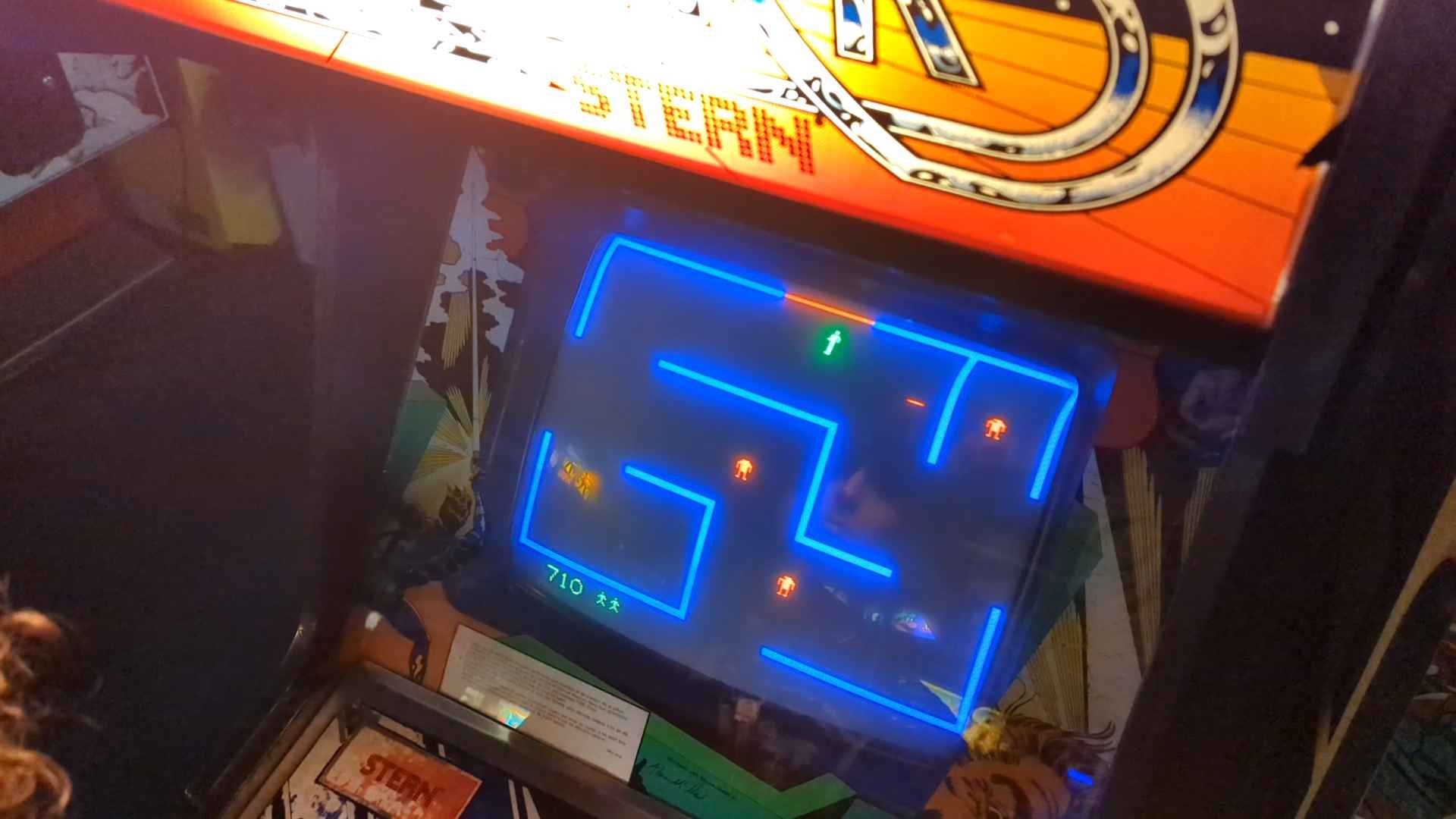
But it should be a reminder to all of us, to make sure we get enough exercise, and don’t get too stressed about these little pixels we love so much.
Oh, just one more thing. Almost slap bang in the middle between Peter Bukowski’s home, Edward Clark Jr.’s home and Friar Tuck’s Game Room, there happens to be a giant water tower that looks just like the villain in Bezerk, Evil Otto.
Friar Tuck’s also backs up literally onto a huge cemetary.

Indication of a darker mysterious force at play, or just media sensationalising, you decide.
Until next time, I’ve been Nostalgia Nerd.
Toodleoo.

Nostalgia Nerd is also known by the name Peter Leigh. They routinely make YouTube videos and then publish the scripts to those videos here. You can follow Nostalgia Nerd using the social links below.
- theghostinmymachine.com/2024/01/29/encyclopaedia-of-the-impossible-the-cursed-berzerk-video-game-arcade-cabinet/ [↩]
- www.reddit.com/r/venturebros/comments/4bosvt/death_by_berzerk_january_of_1981_jeff_dailey_died/ [↩]
- allincolorforaquarter.blogspot.com/2013/01/video-game-related-deaths.html [↩]
- web.archive.org/web/20211128012913/https://www.nwitimes.com/uncategorized/markham—an-18-year-old-chicago-man-received-11-years-in-prison-tuesday/article_f3f7c795-2e43-5dc7-aa72-20297f36387c.html [↩]
- www.newspapers.com/image/847093907/?match=1&clipping_id=172776042 [↩]


